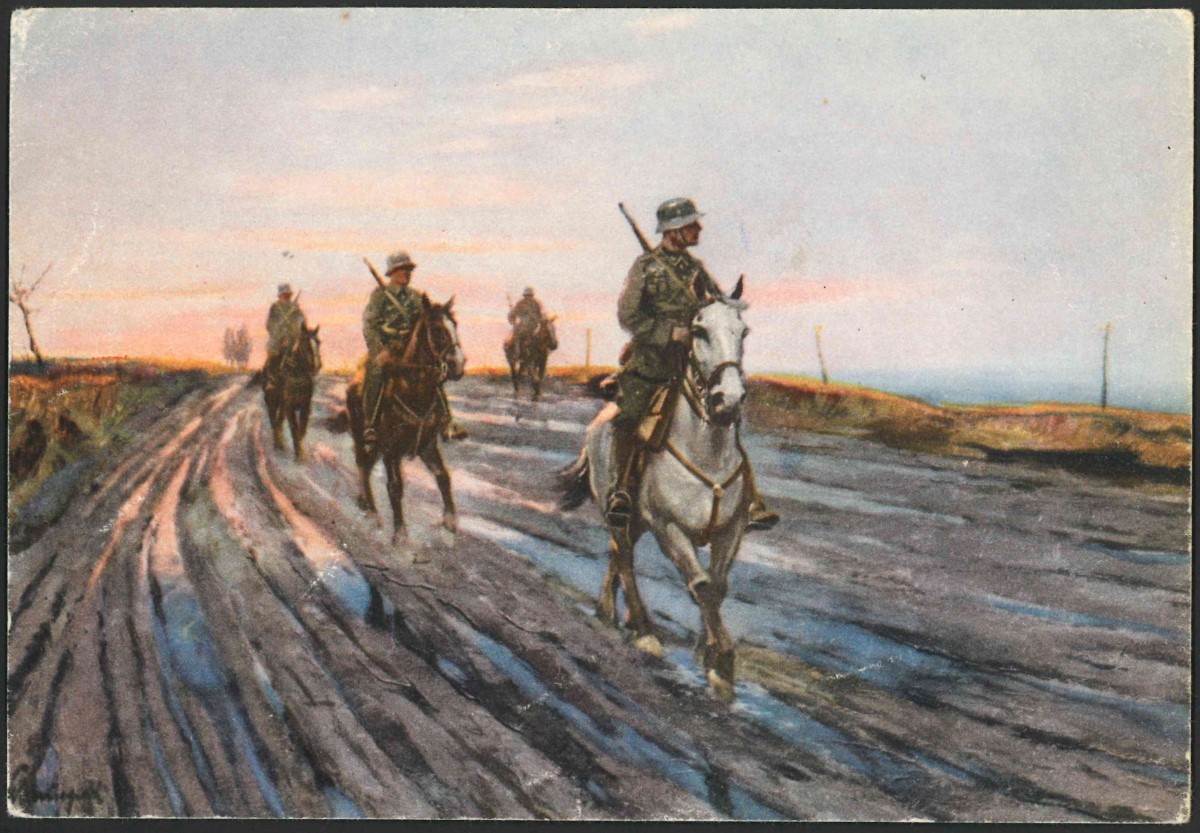SECOND WORLD WAR POSTCARDS
This page was last updated
18-Feb-2025 02:02

NATIONALSOZIALISTISCHEN KRIEGSOPFERVERSORGUNG
NSKOV
POSTCARDS
This series of artistic postcards is titled "KRIEGSOPFER-WANDKALENDER | der | Nationalsozialistischen | Kreigsopferversorgung" - 'VICTIMS OF WAR WALL CALENDAR | the | National Socialists | war casualty supply'. The idea and the design was by Friedrich Ebert of Berlin and the set consists of at least 18 cards.

As the name suggests these cards were part of a wall calendar and the examples below are from the 1943 version which covered the period 1st Jan 1943 to 8th Jan 1944. The calendar may also have been available in other years but I haven't seen any pages other than 1943 (more research required). Each page of the calendar had a two week period on the top half, and a removable postcard on the lower half.
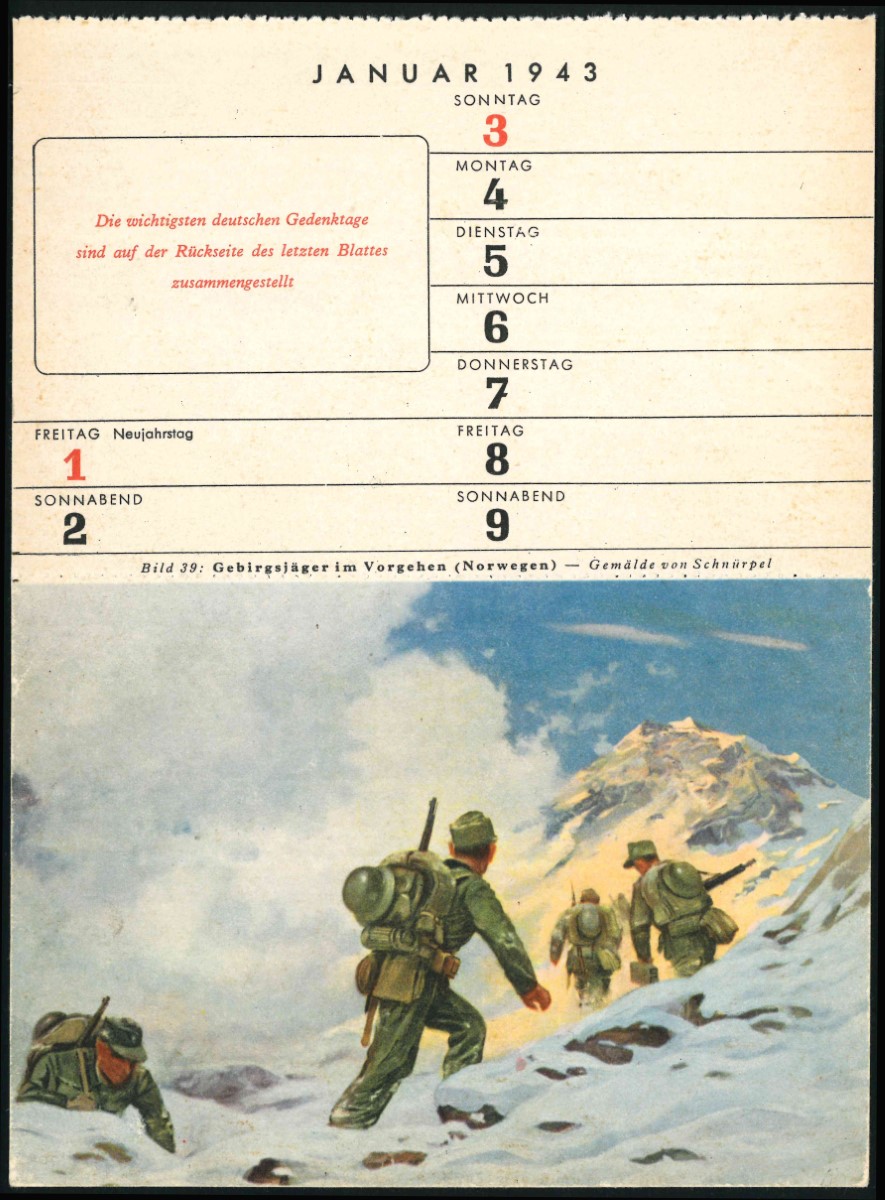
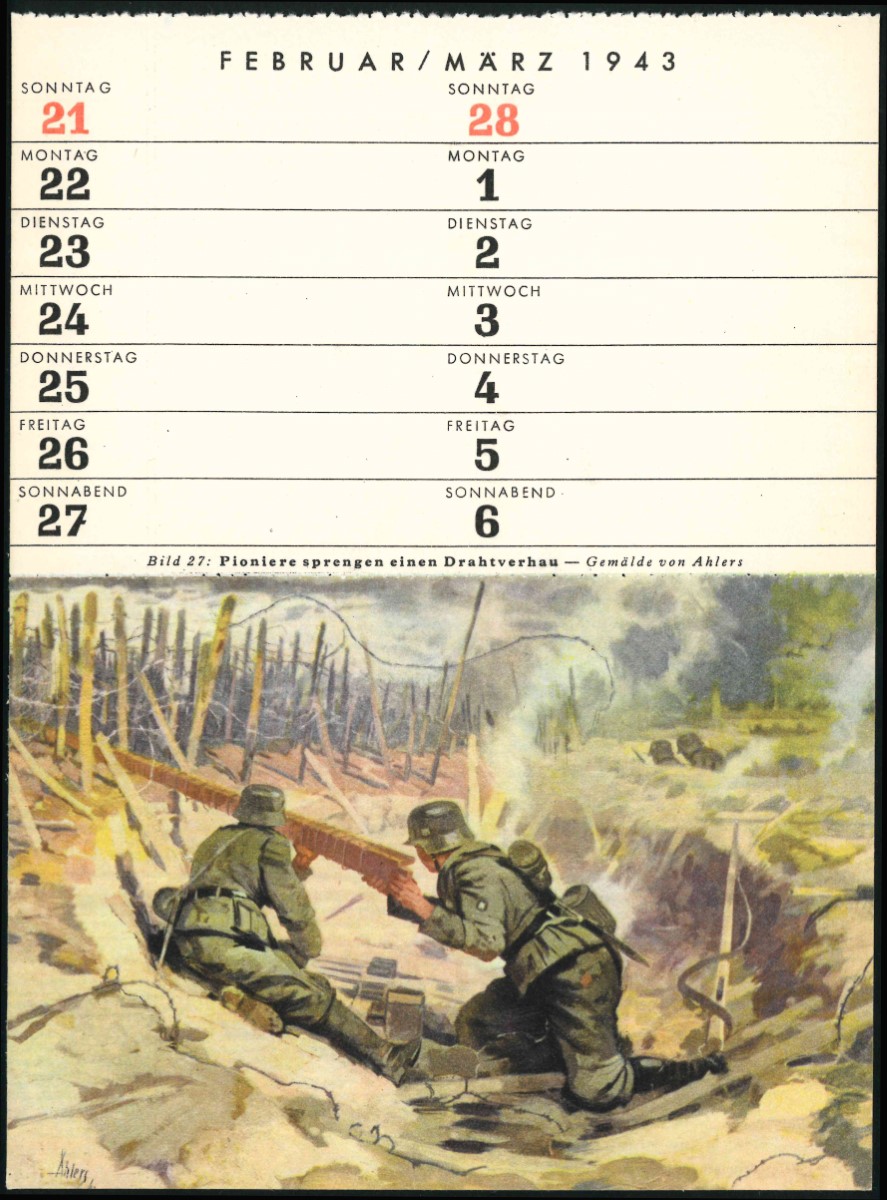
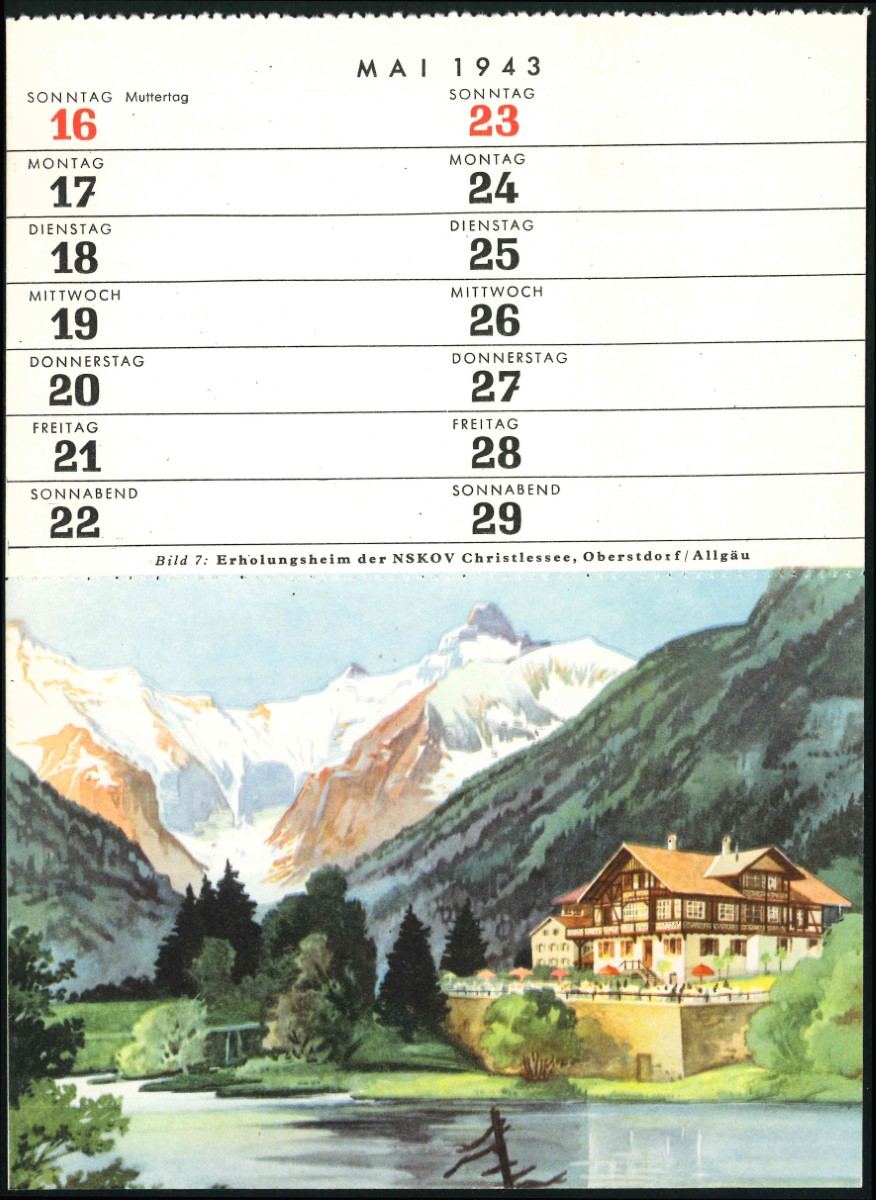
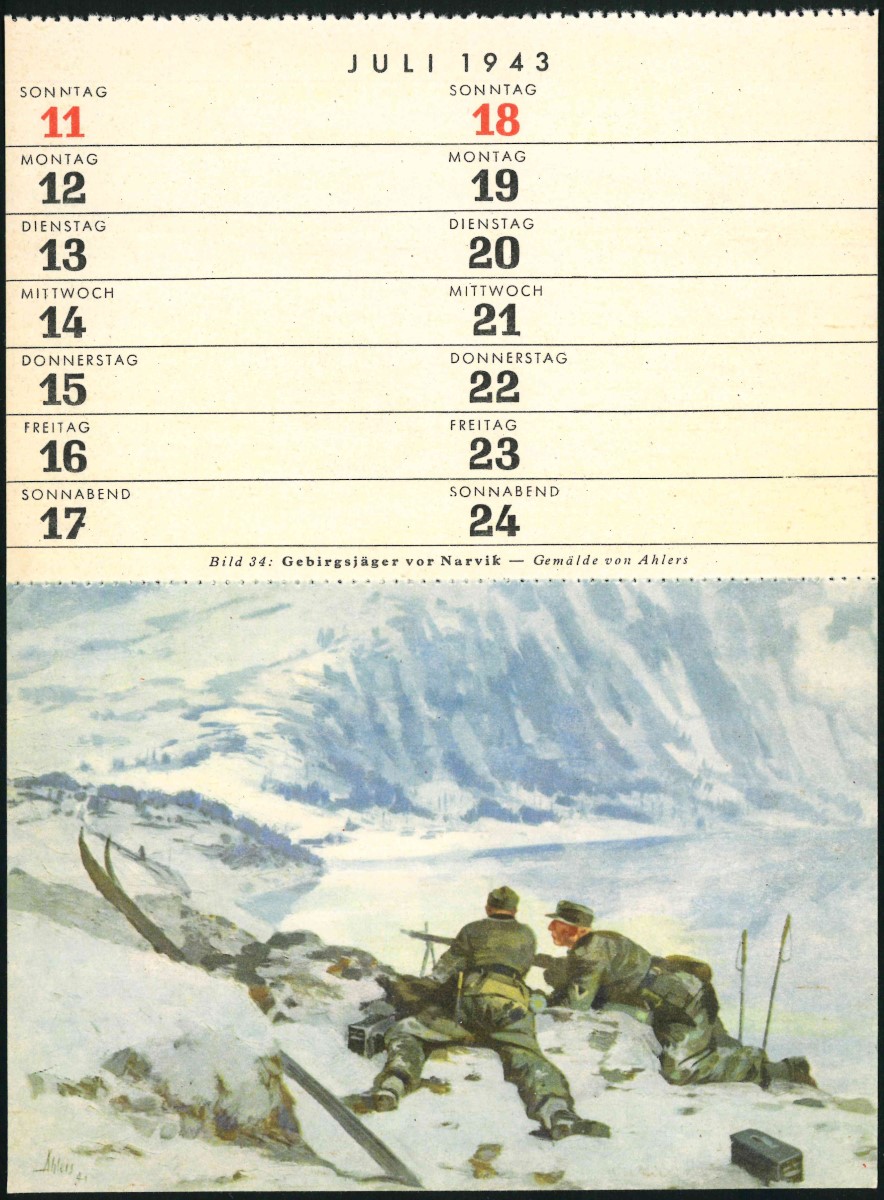
ABOVE LEFT: Card No. 39. From 1st to 9th Jan
ABOVE CENTRE LEFT: Card No. 27. From 21st Feb to 6th Mar
ABOVE CENTRE RIGHT: Card No. 7. From 16th to 29th May
ABOVE RIGHT: Card No. 34. From 11th to 24th Jul
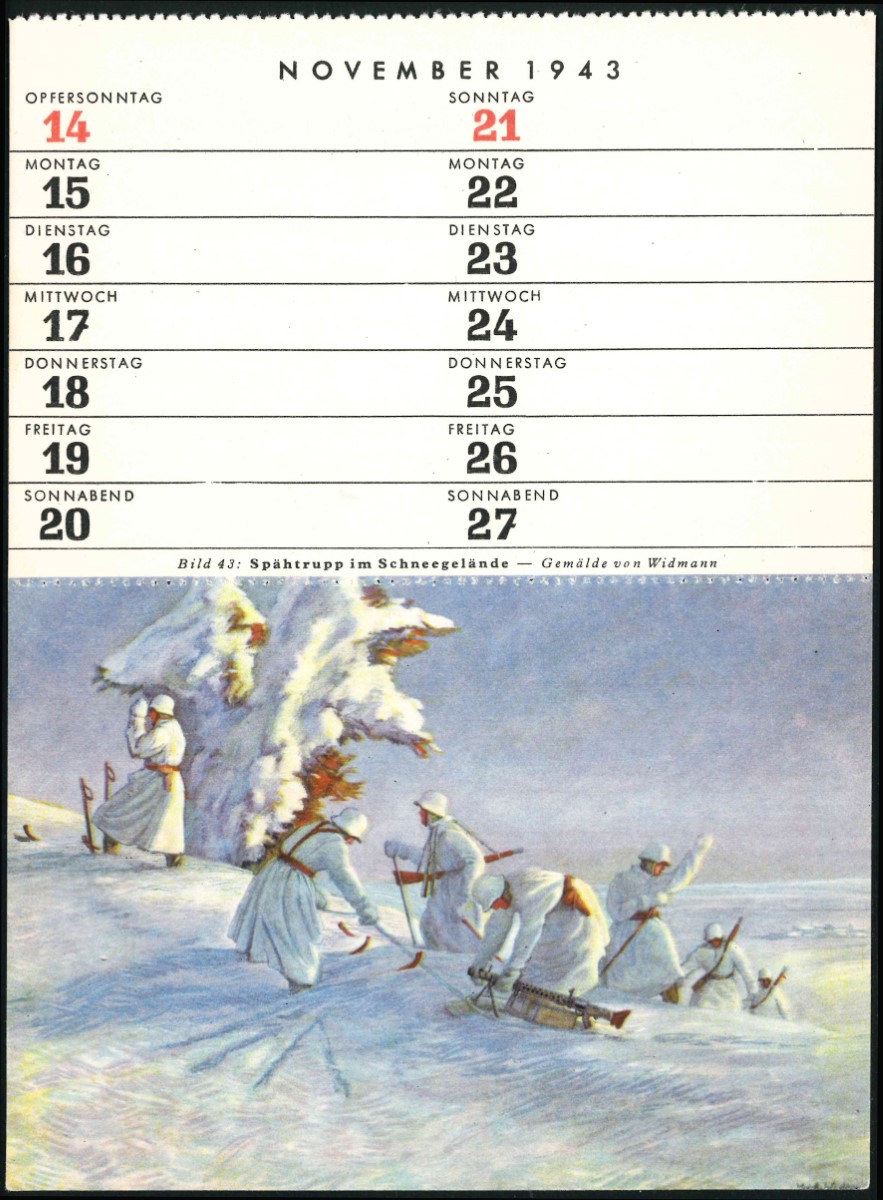
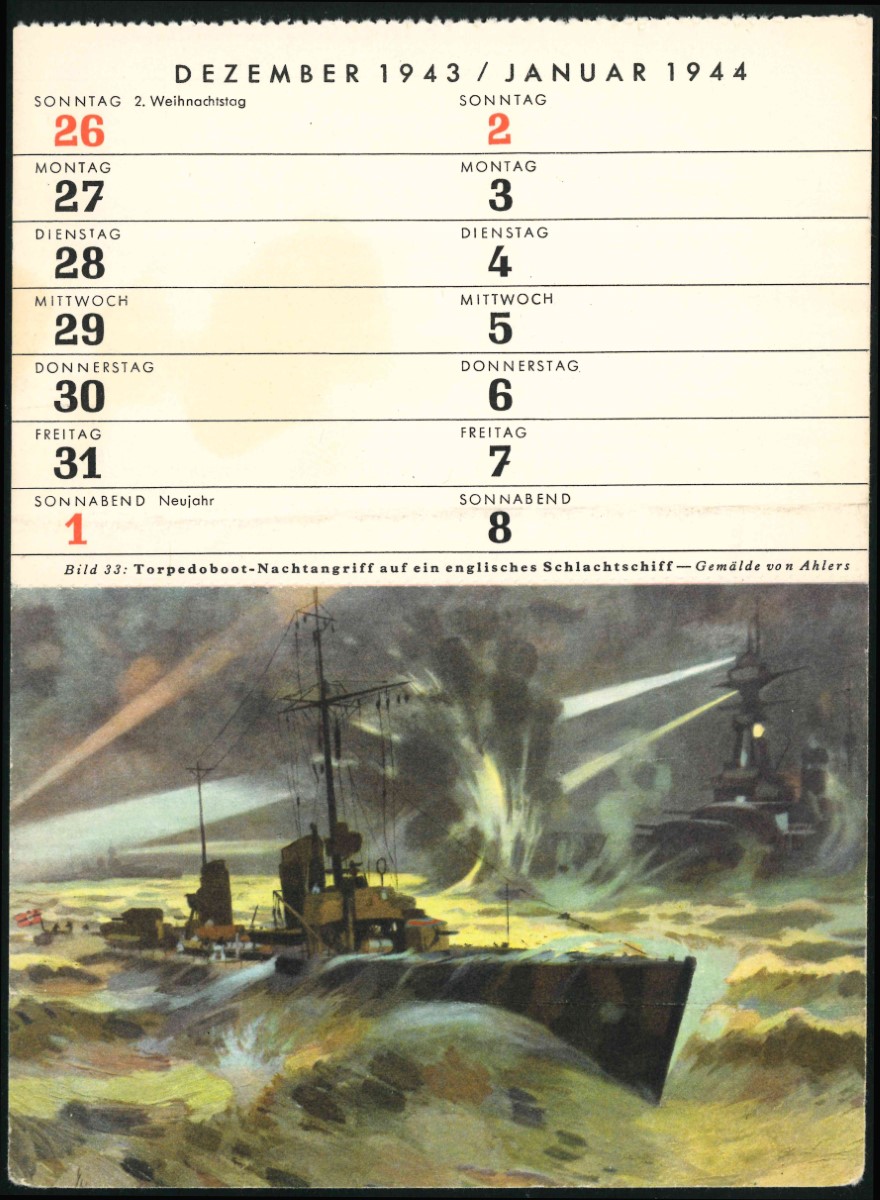
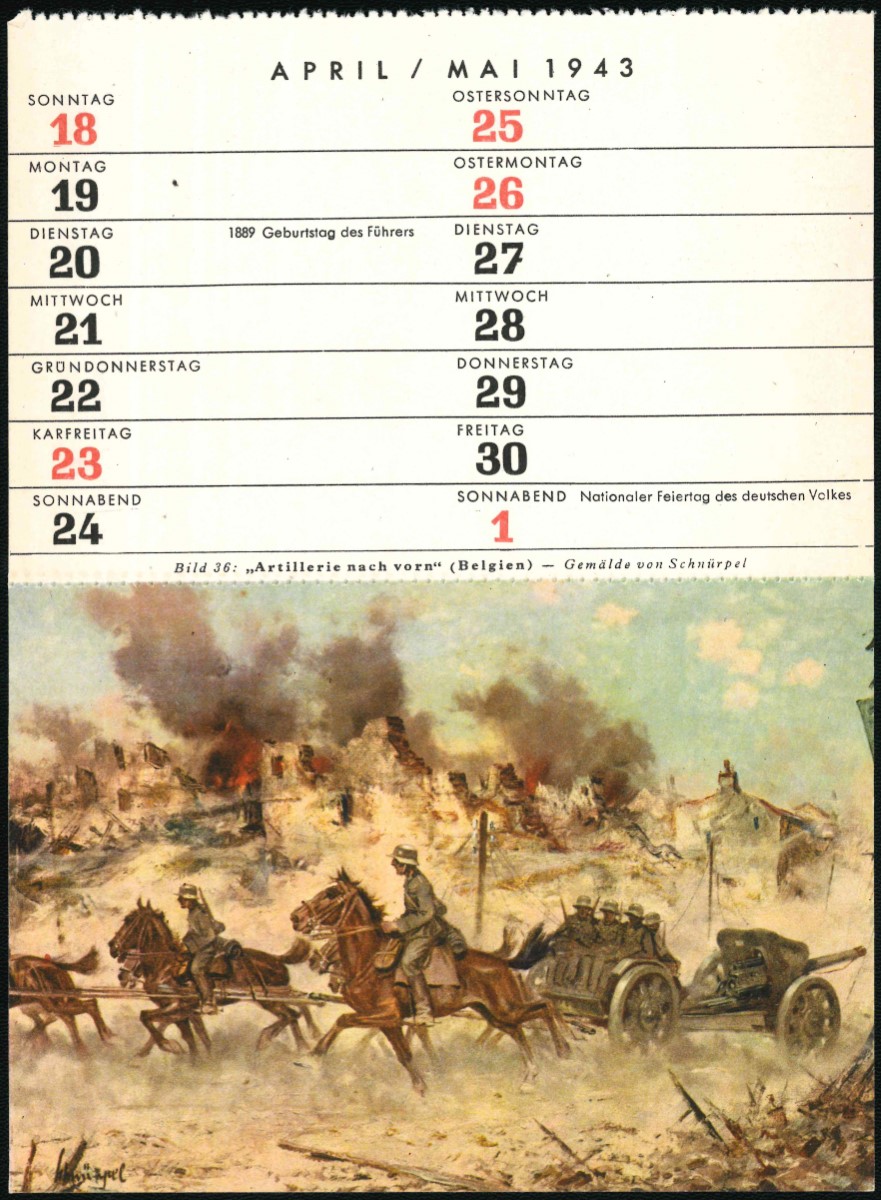
ABOVE LEFT: Card No. 43. From 14th to 27th Nov
ABOVE CENTRE: Card No. 33. From 26th Dec 1943 until 8th Jan 1944
ABOVE RIGHT: Card No. 36. From 18th Apr 1943 until 1st May 1943
This would indicate that if there was always only one postcard per page then there were perhaps 27 pages in the complete calendar, not counting the front and back pages. Based on the half-dozen or so pages I have seen (not the complete calendar) this would appear to be the case.
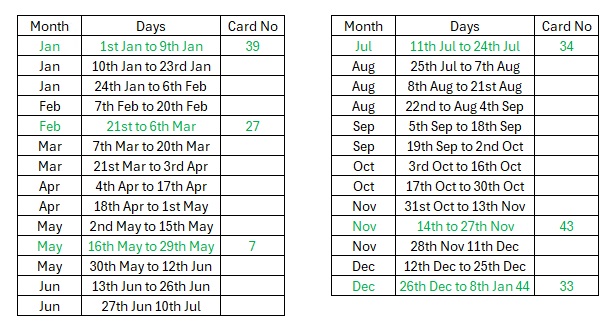
Each card has its own individual number but these seem to be totally random and are not sequential with the calendar pages/dates.

No. 7
Titled "Erholungsheim der NSKOV Christlessee, Oberstdorf Allgäu" - 'NSKOV Christlessee rest home, Oberstdorf Allgäu'. Drawing by von Gumbart.
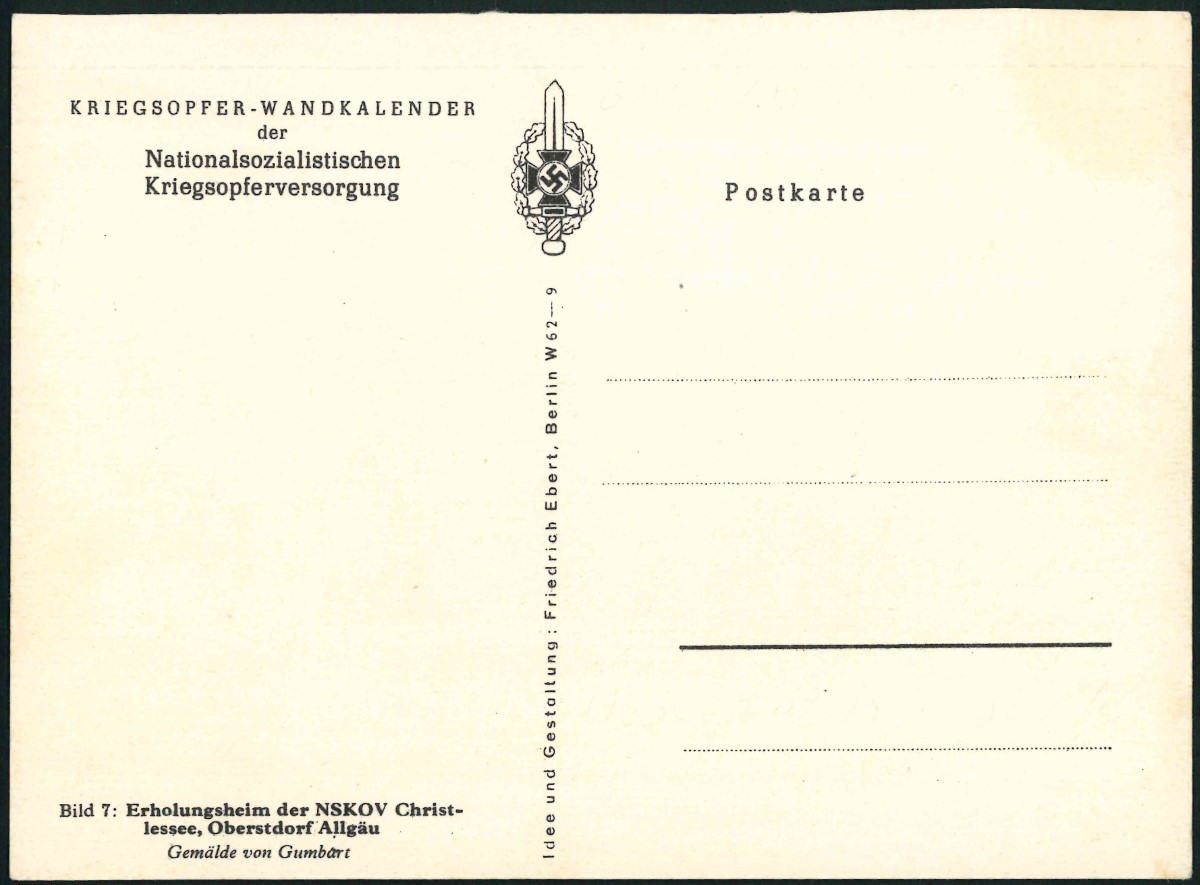


No. 13
Titled "Flagge der Infanterie" - 'The flag of the infantry'
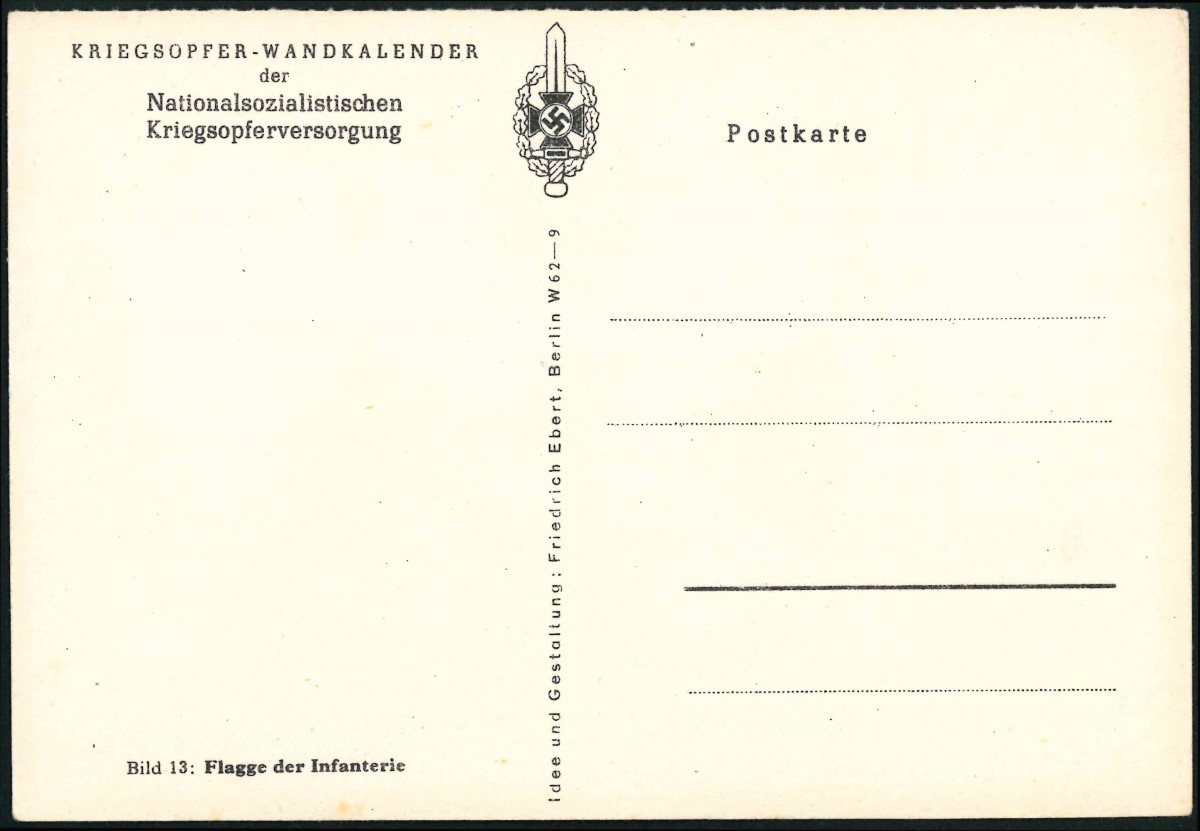


No. 14
"Flagge der Marine" - 'The flag of the Navy'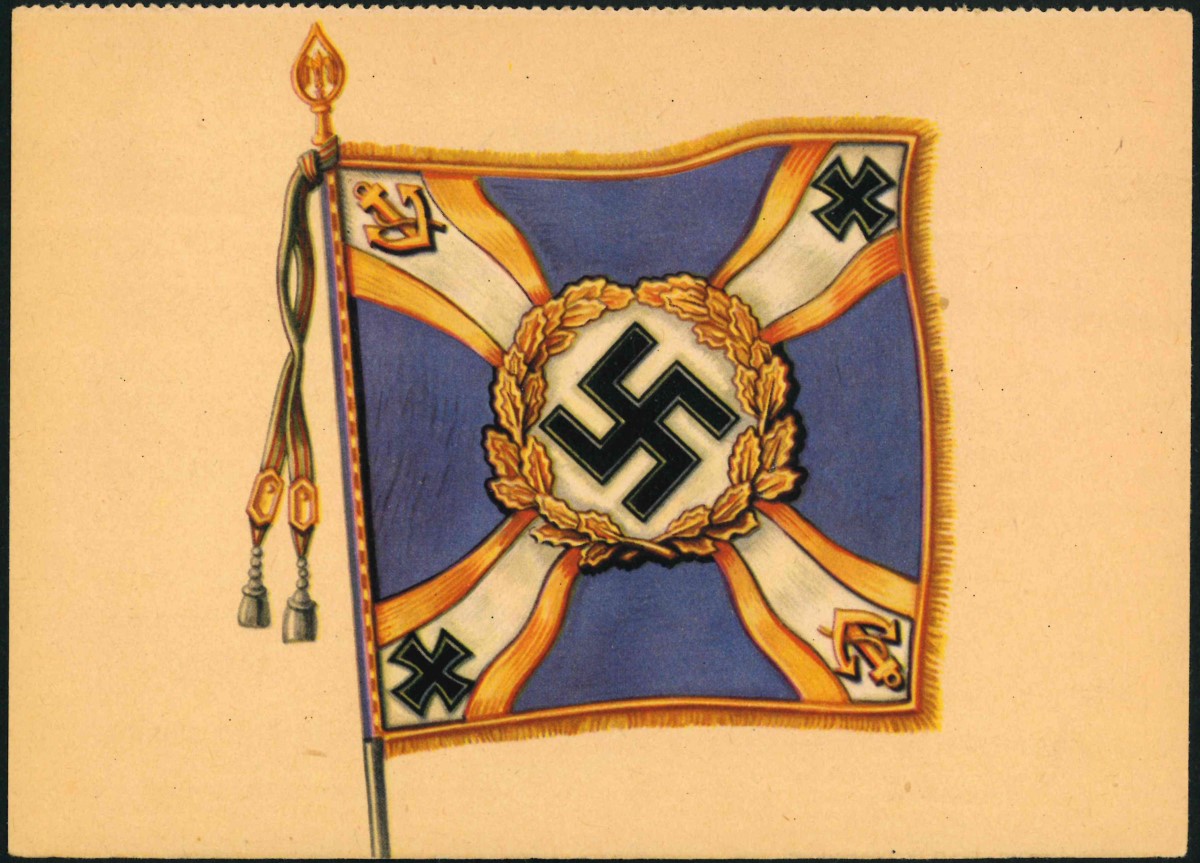



No. 16
"Führerstandarte" - 'Führer Standard'



No. 19
"Flagge der Flieger" - 'The flag of the aviators'
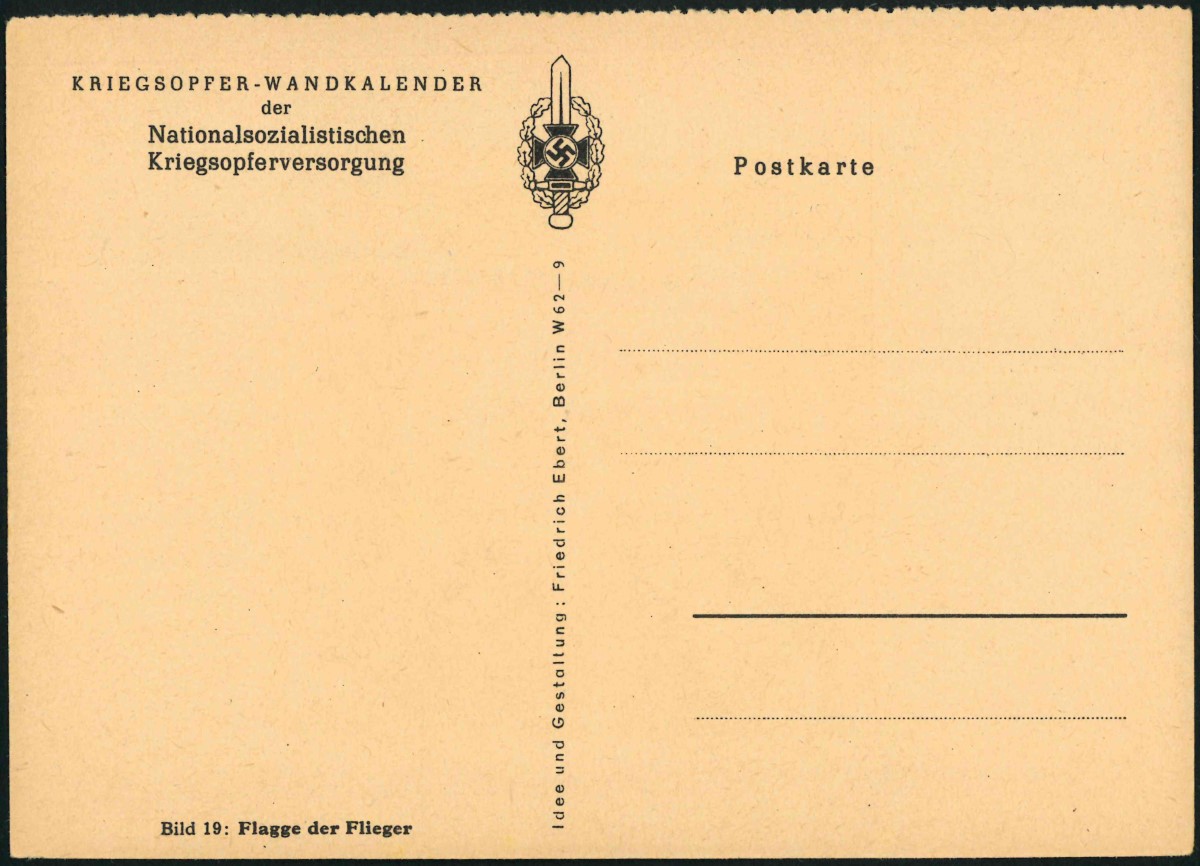


No. 24
"Flagge der Flakartillerie" - 'The flag of the anti-aircraft artillery'
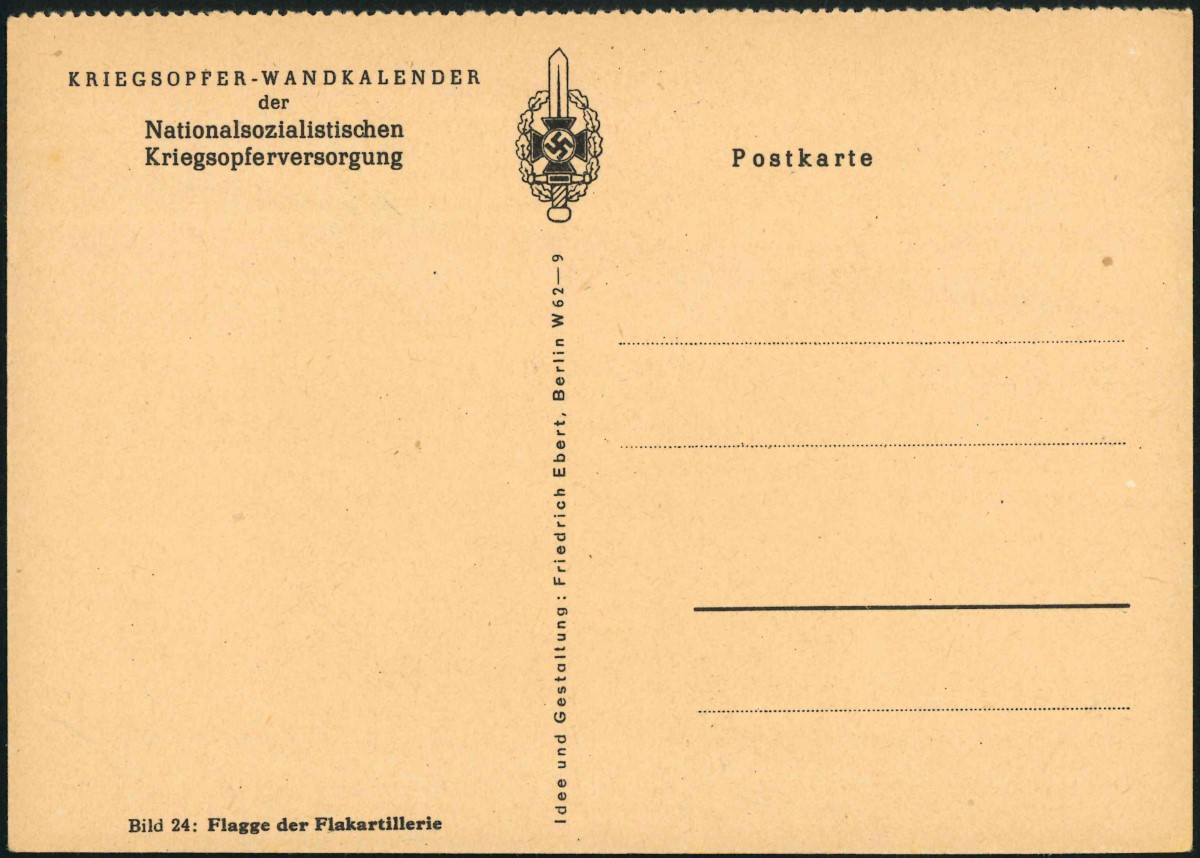


No. 25
This postcard is titled 'Pak erledigt einen russischen Panzer (10t)' - 'Pak kills a Russian tank (10t)'. Painting by Ahlers.
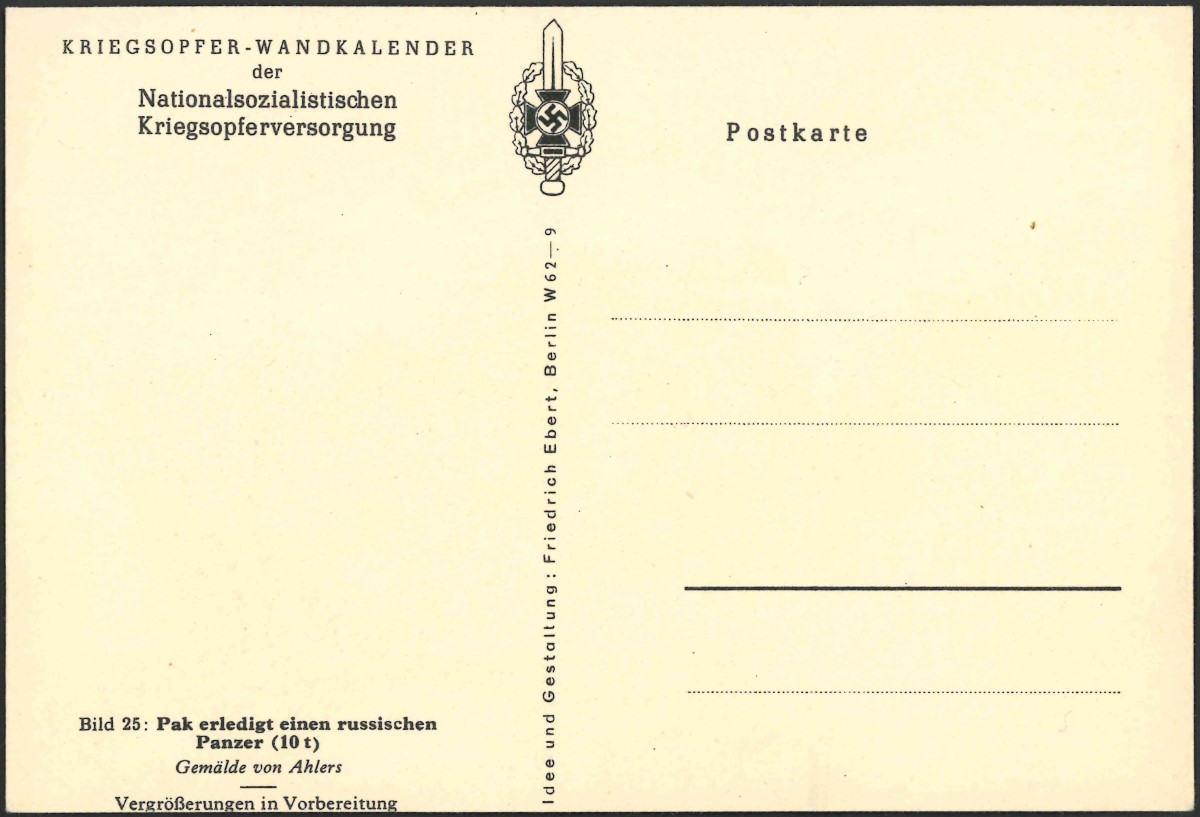


No. 26
This postcard is titled 'Störungssucher flicken eine Telefonleitung (Weygand-Linie)' - 'Lineman mending a telephone line (Weygand line)'. Painting by Ahlers. Telephone lines were very important to the soldiers at the front. A forward observer was able to quickly relay troop movements back to artillery and have them adjust where their shells landed, without telephone lines this task was all but impossible.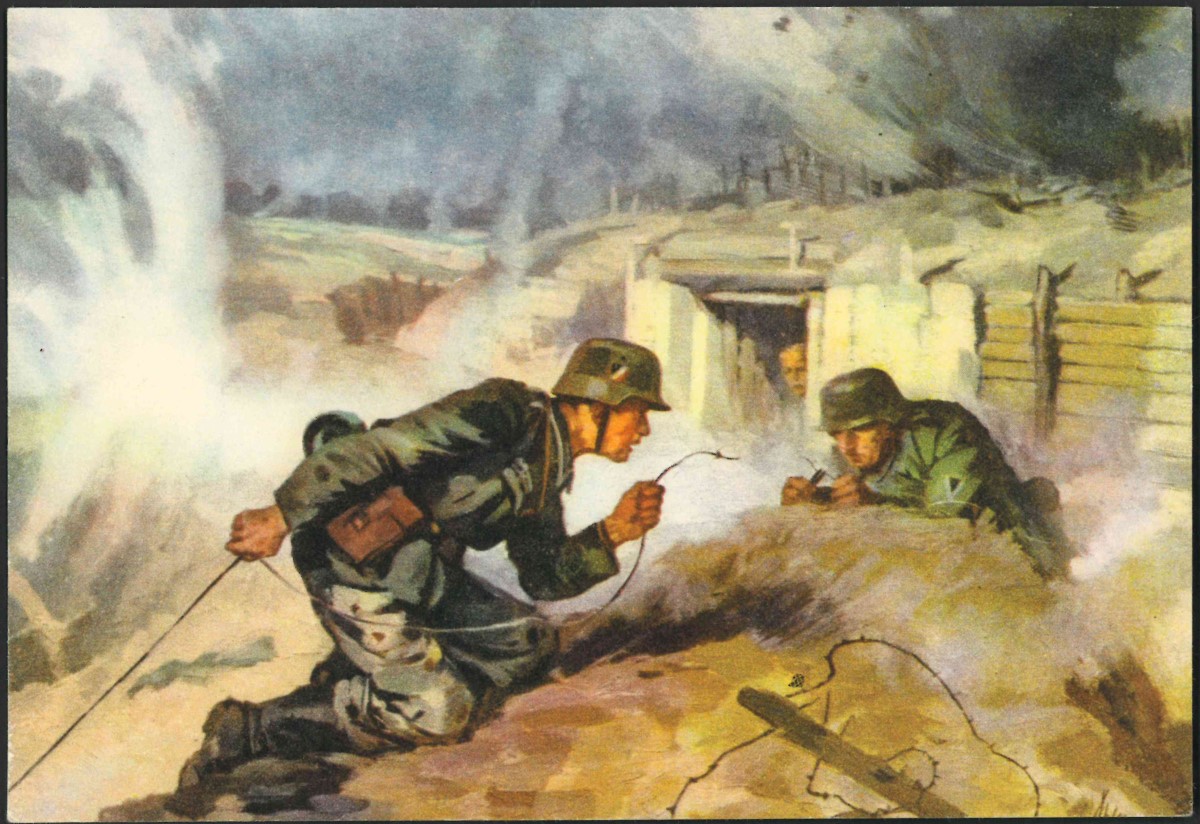
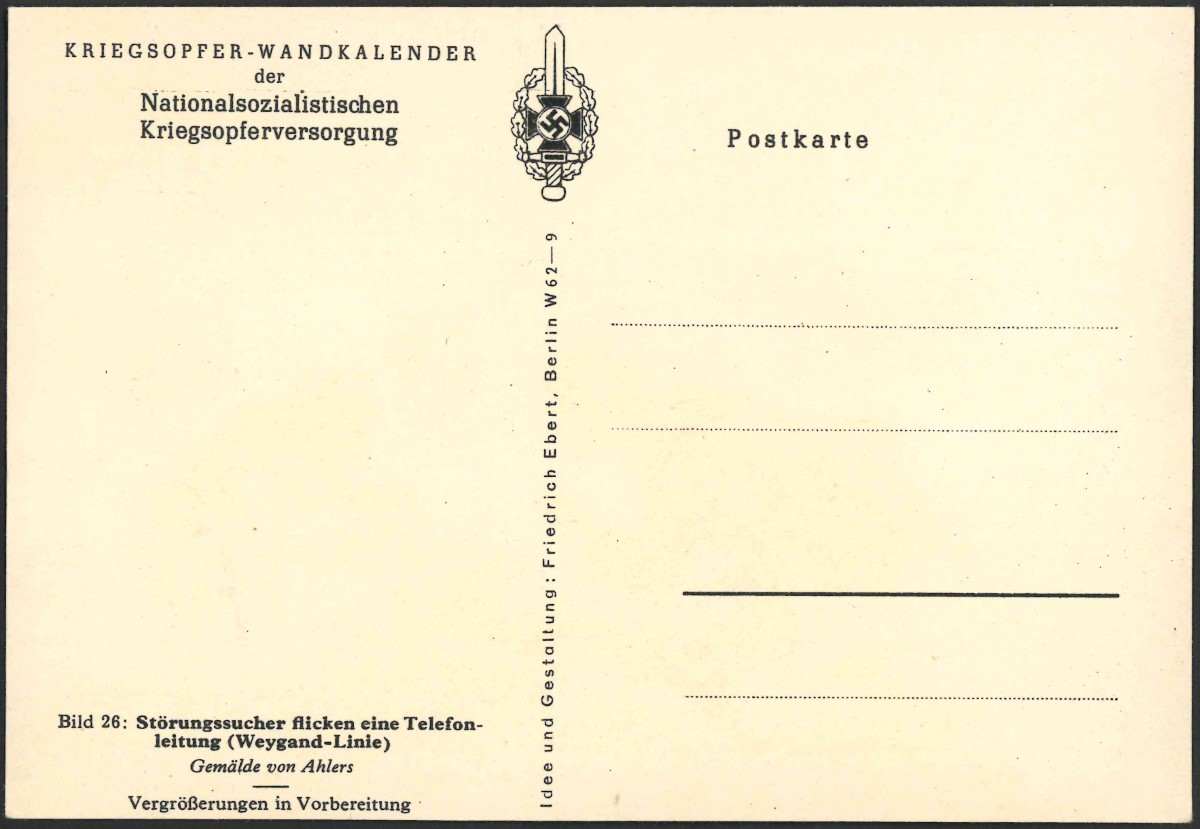


No. 27
This postcard is titled 'Pioniere sprengen einen Drahtverhau' - 'Pioneers break wire entanglements'. Painting by Ahlers. Laying barbed wire was perhaps one of the most dangerous jobs a soldier could be asked to perform. It generally involved laying wire close to enemy lines where there was the constant risk of being discovered as the wire was placed. For the most part rubber mallets and sound reducing covers were used to keep any sounds to a minimum.
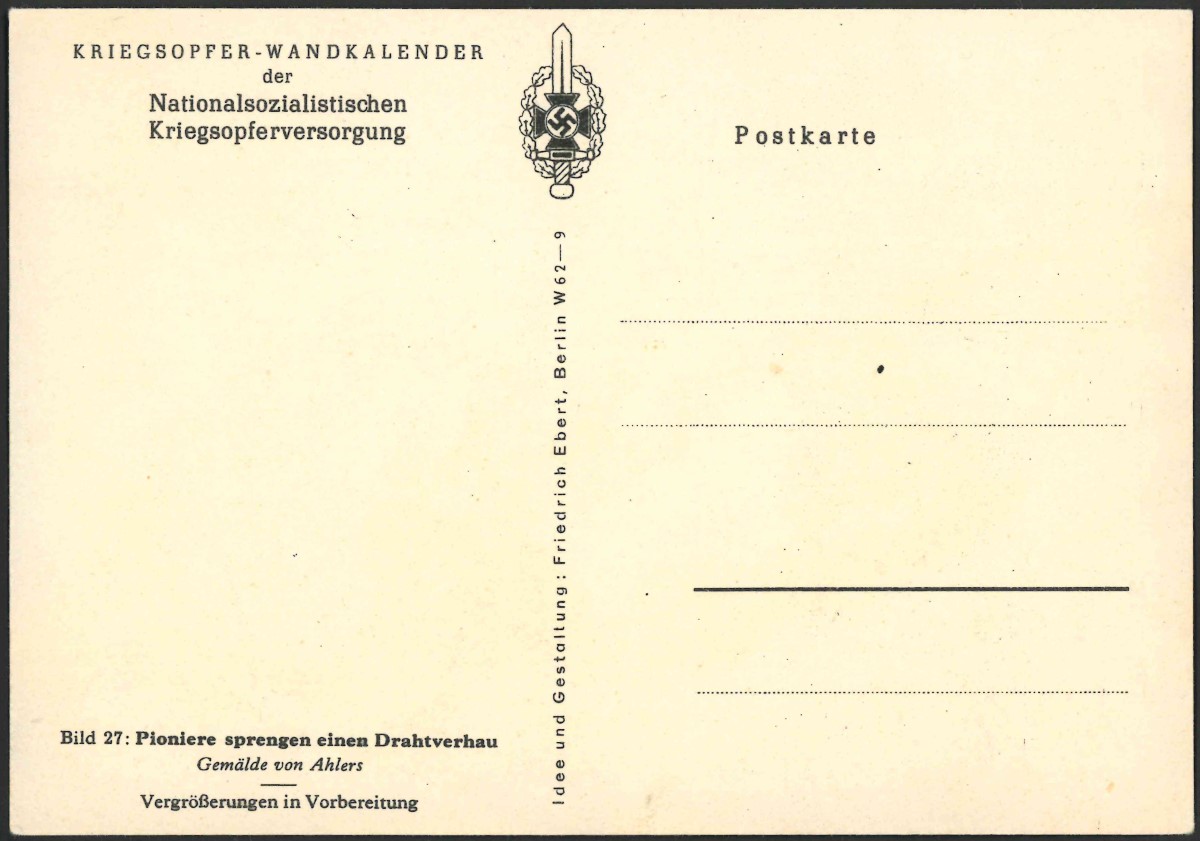


No. 28
Titles "Stukas vernichten einen englischen Geleitzug (Plymouth)" - 'Stukas destroy an English convoy (Plymouth)'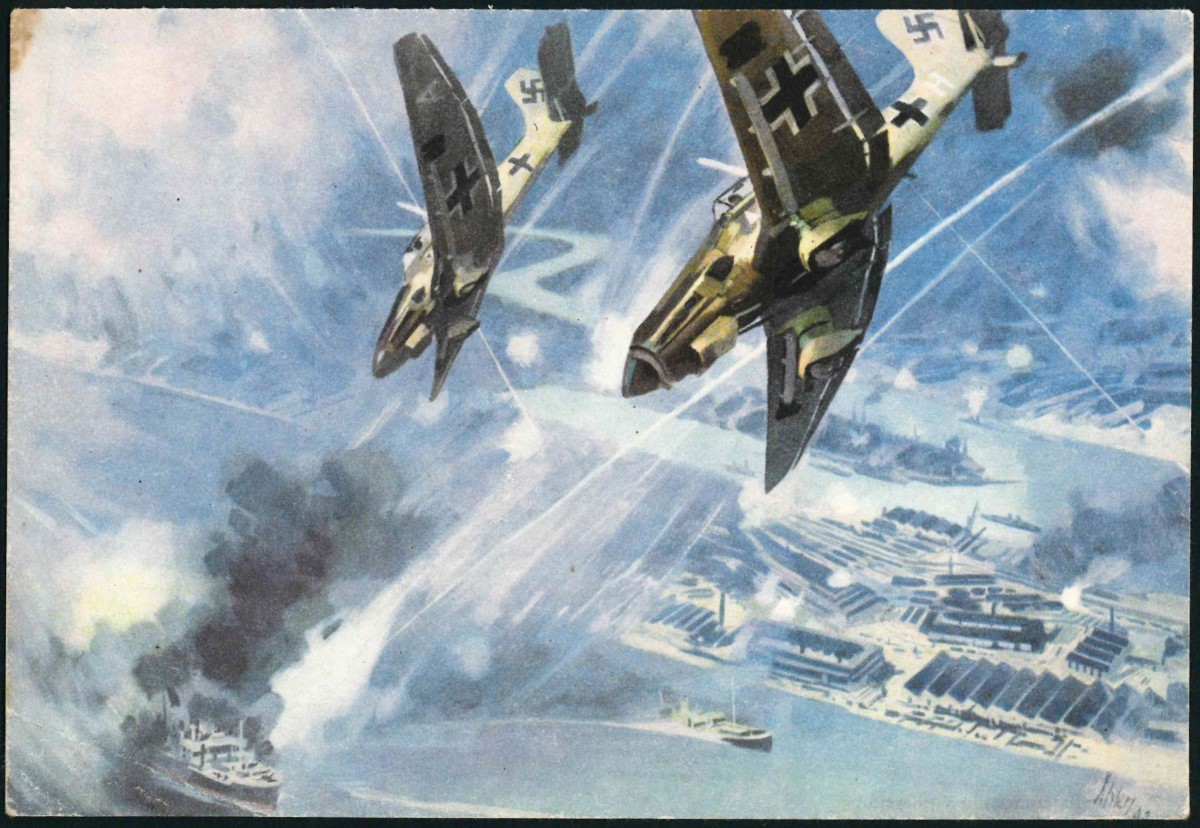
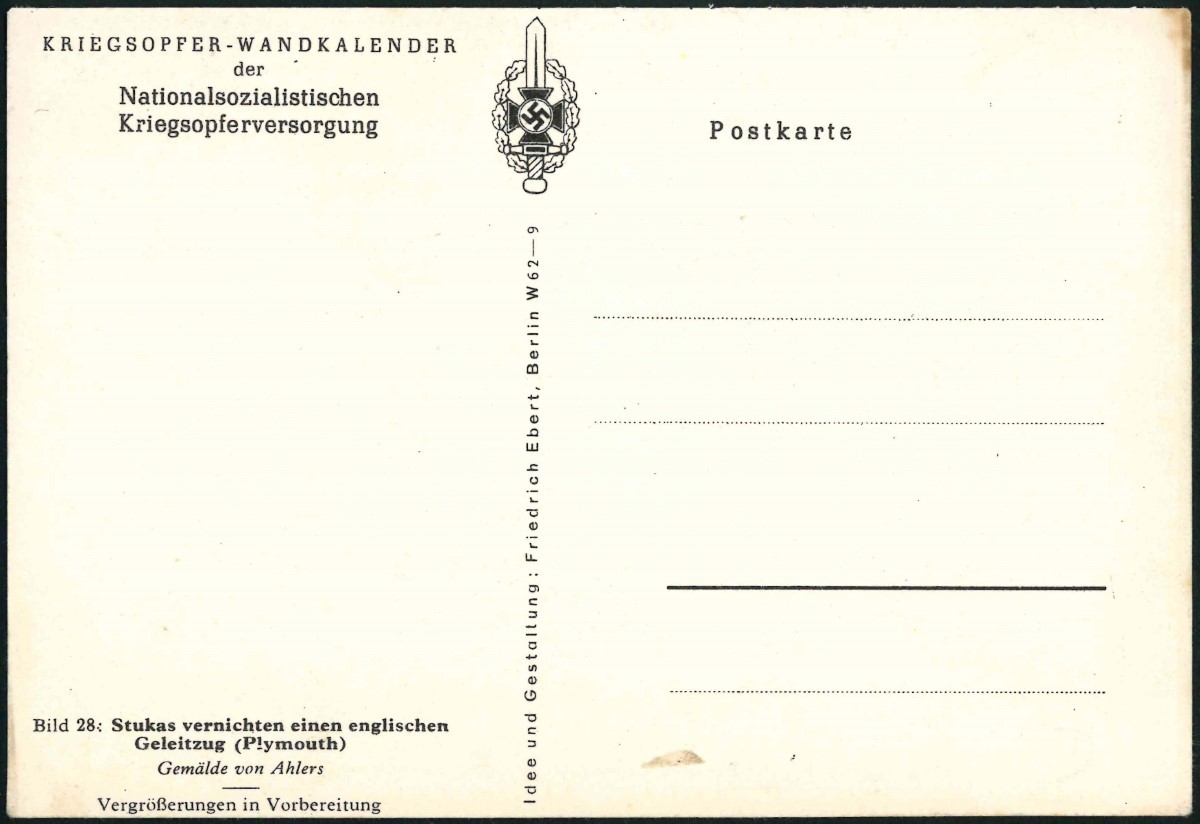


No. 29
This postcard is titled 'Fallschirmjäger landen auf kreta' - 'Paratroopers land on Crete'. Painting by Ahlers. The invasion of Crete was the last time that German paratroopers took part in an aerial assault. For the rest of the war the paratroops only operated as ground troops.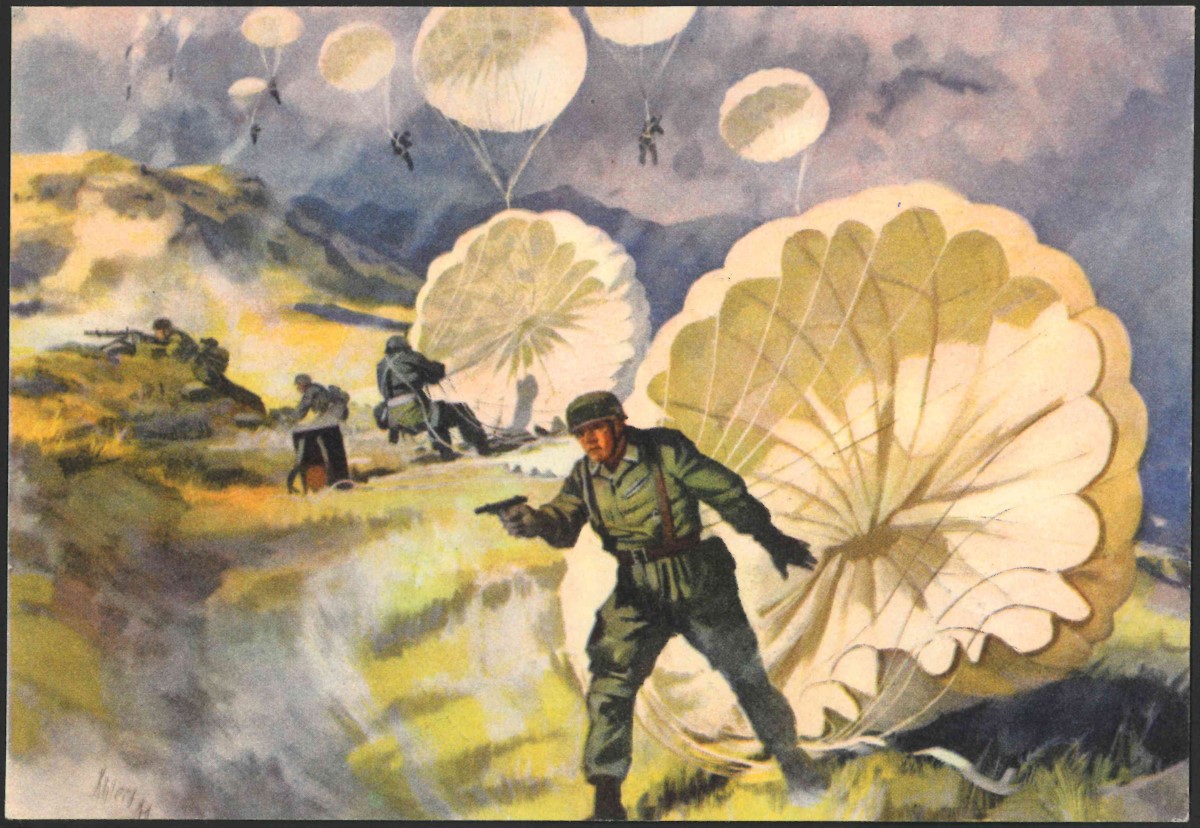



No. 30
This postcard is titled 'Panzer überrennen eine englische Batterie (Lybien)' - 'Tanks overrun an English battery (Libya)'. Painting by Ahlers.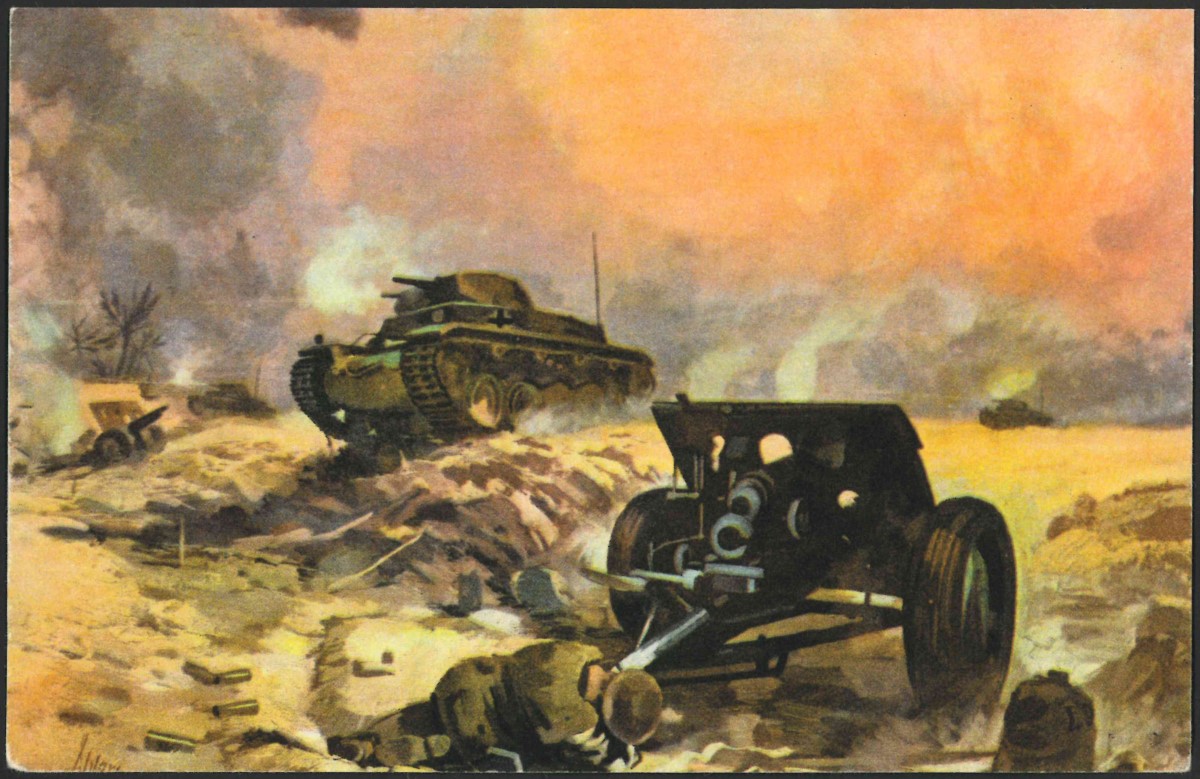
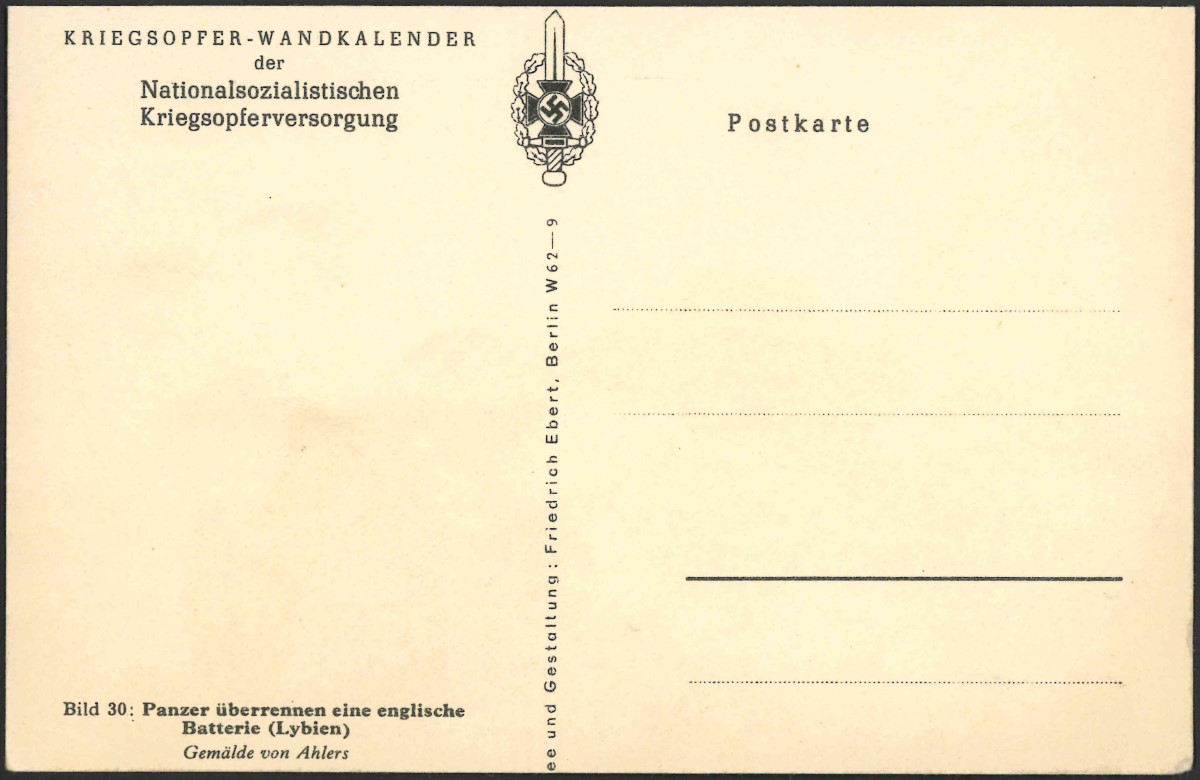


No.31
This painting is titled 'Feldhaubitze (10.5 cm) in Griechenland (Metaxas-Linie)' - 'Field howitzer (10.5 cm) in Greece (Metaxas line)'.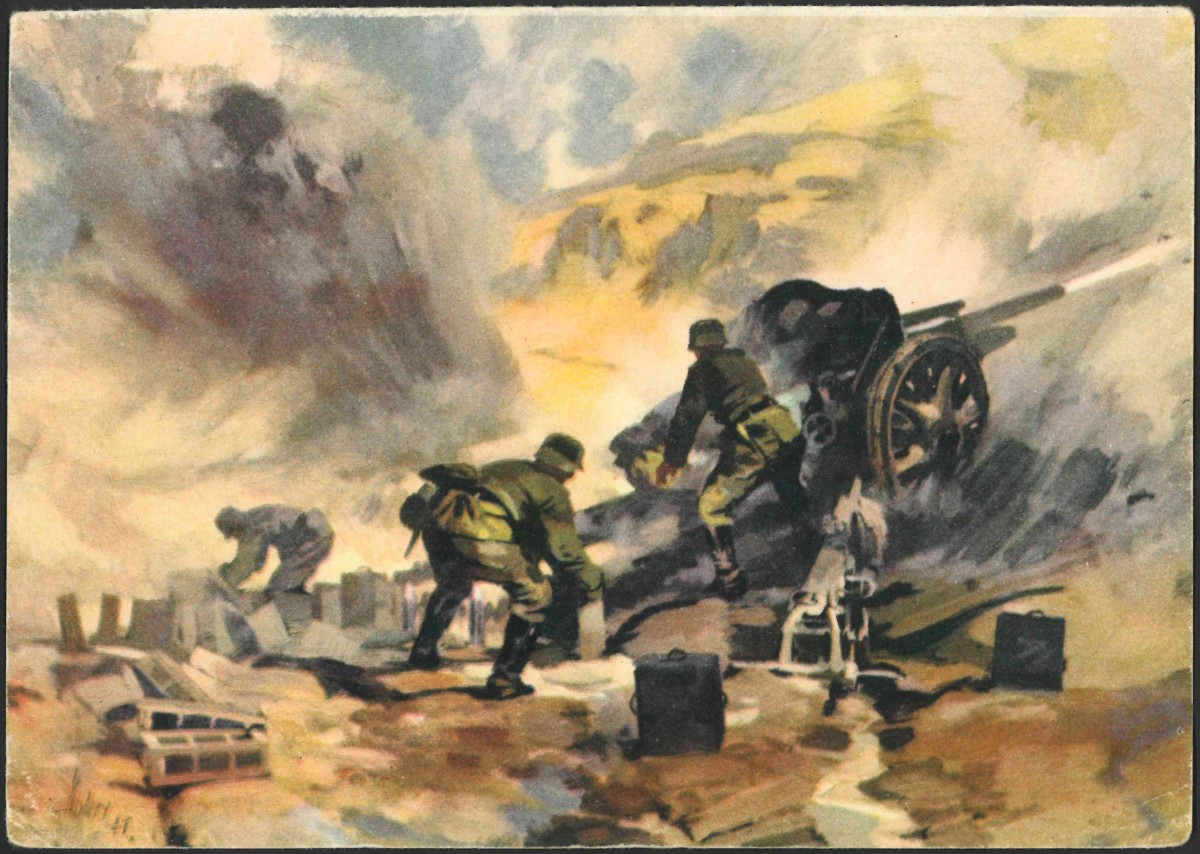



No. 32
Card No. 32 bears the inscription "Kavallerie erzwingt einen | FLuβübergang in Polen | | Gemälde von Ahlers | Vergröβerungen in Vorbereitung" - 'Cavalry forces a | river crossing in Poland | | Painting by Ahlers | Enlargements in preparation'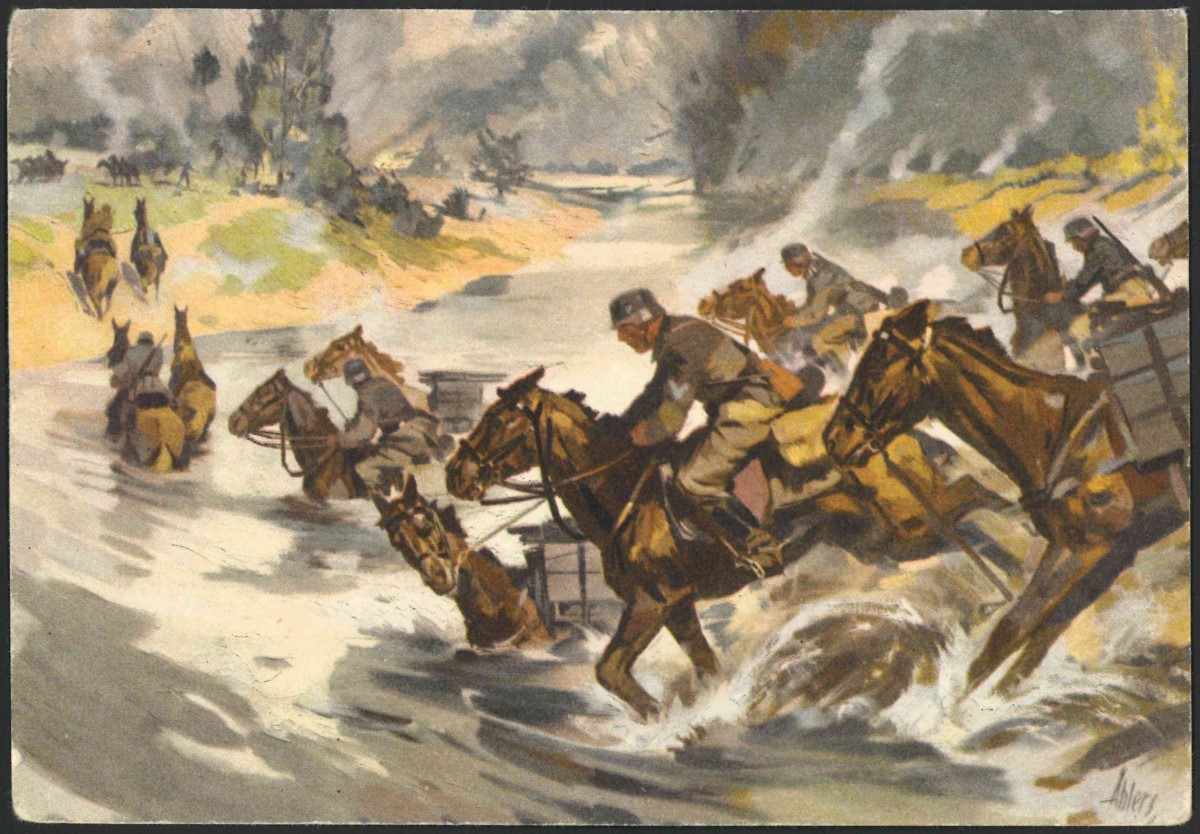
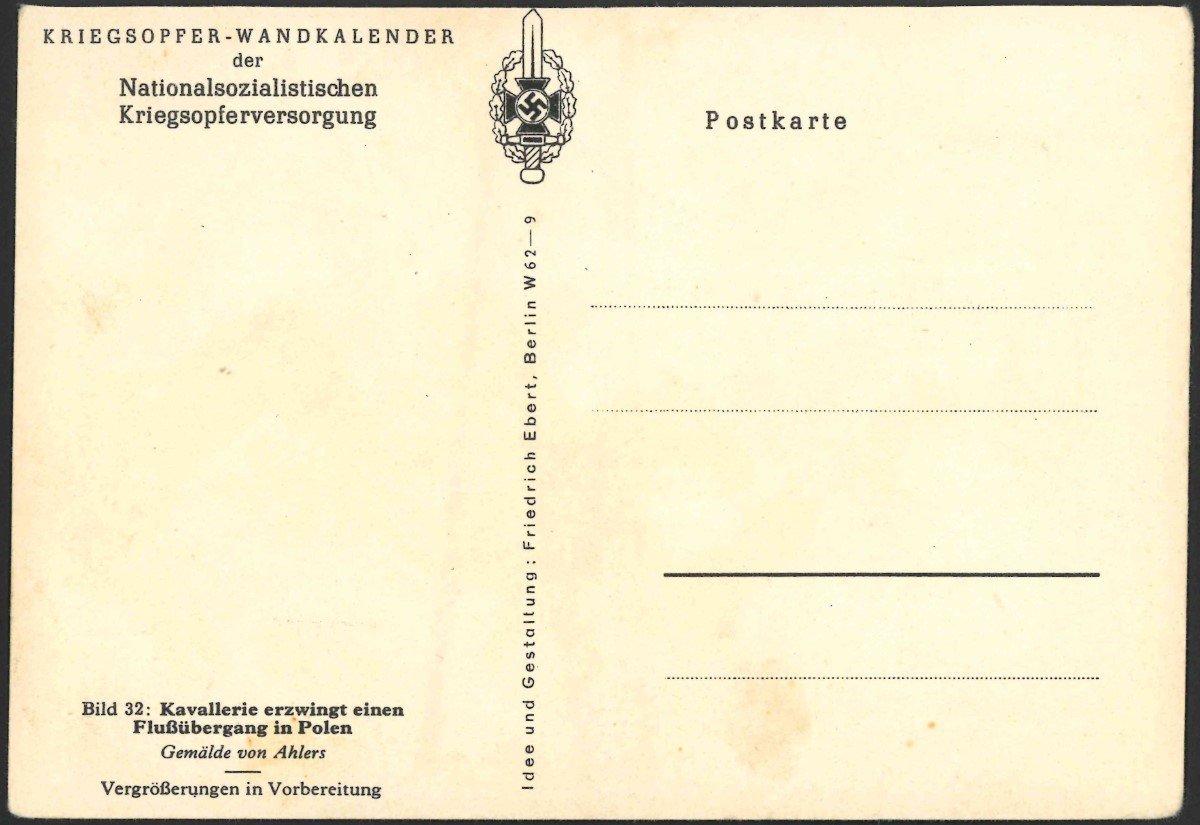


No. 33
The following card has the title "Torpedoboot-Nachtangriff auf ein englisches Schlachtschiff" - 'Torpedo boat night attack on an English battleship'
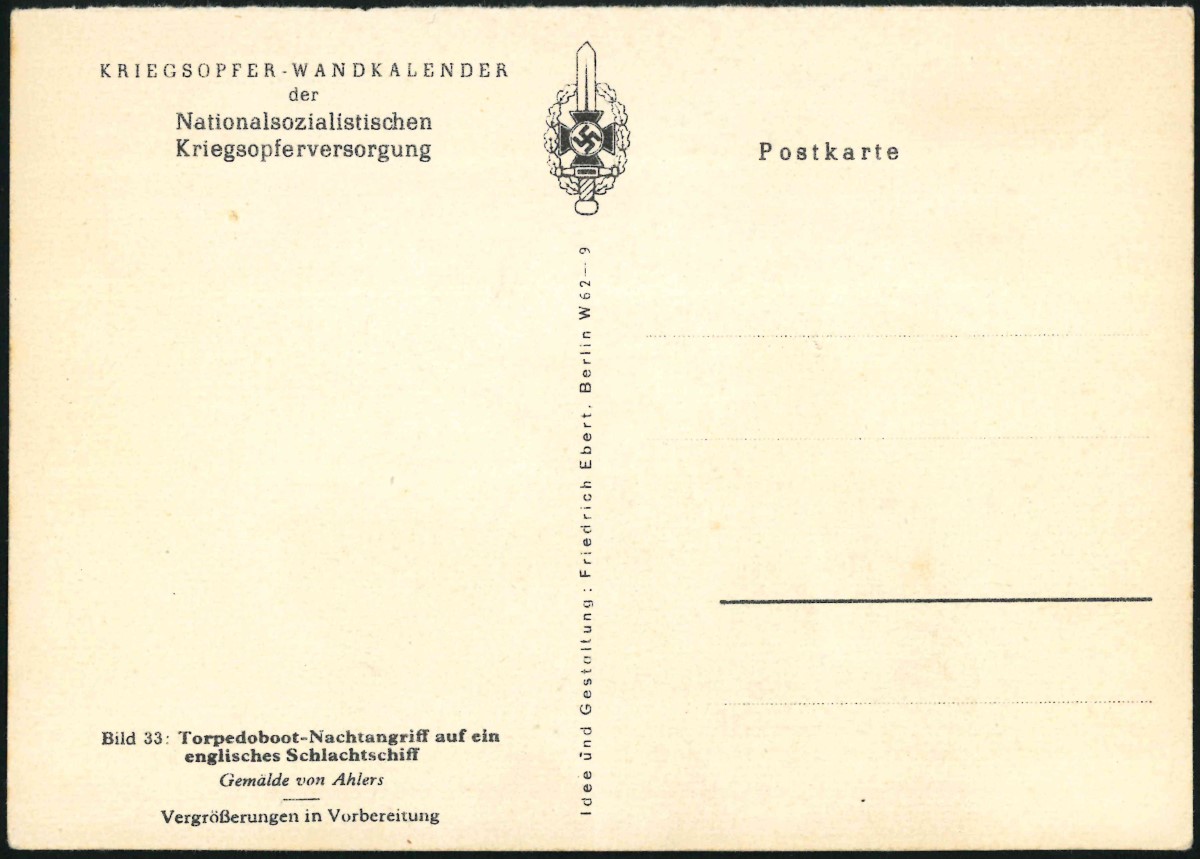


No. 34
The card below bears the inscription "Gebirgsjäger vor Narvik | Gemälde von Ahlers | Vergröβerungen in Vorbereitung" - 'Mountain troops in front of Narvik | Painting by Ahlers | Enlargements in preparation'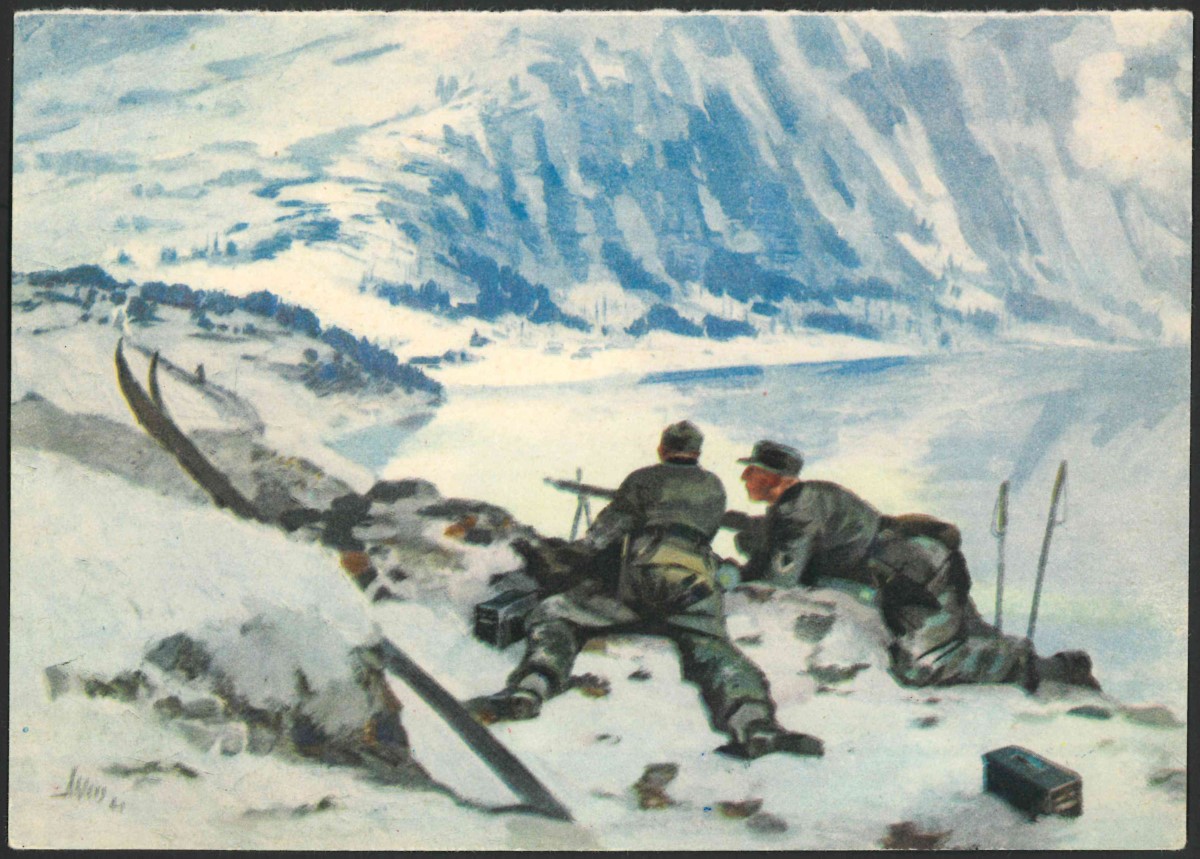



No. 35
The next card bears the inscription "Infanterie in Straβenkampf | (Frankreich) | Gemälde von Schnürpel | Vergröβerungen in Vorbereitung" - 'Infantry in street fighting | (France) | Painting by Schnürpel | Enlargements in preparation'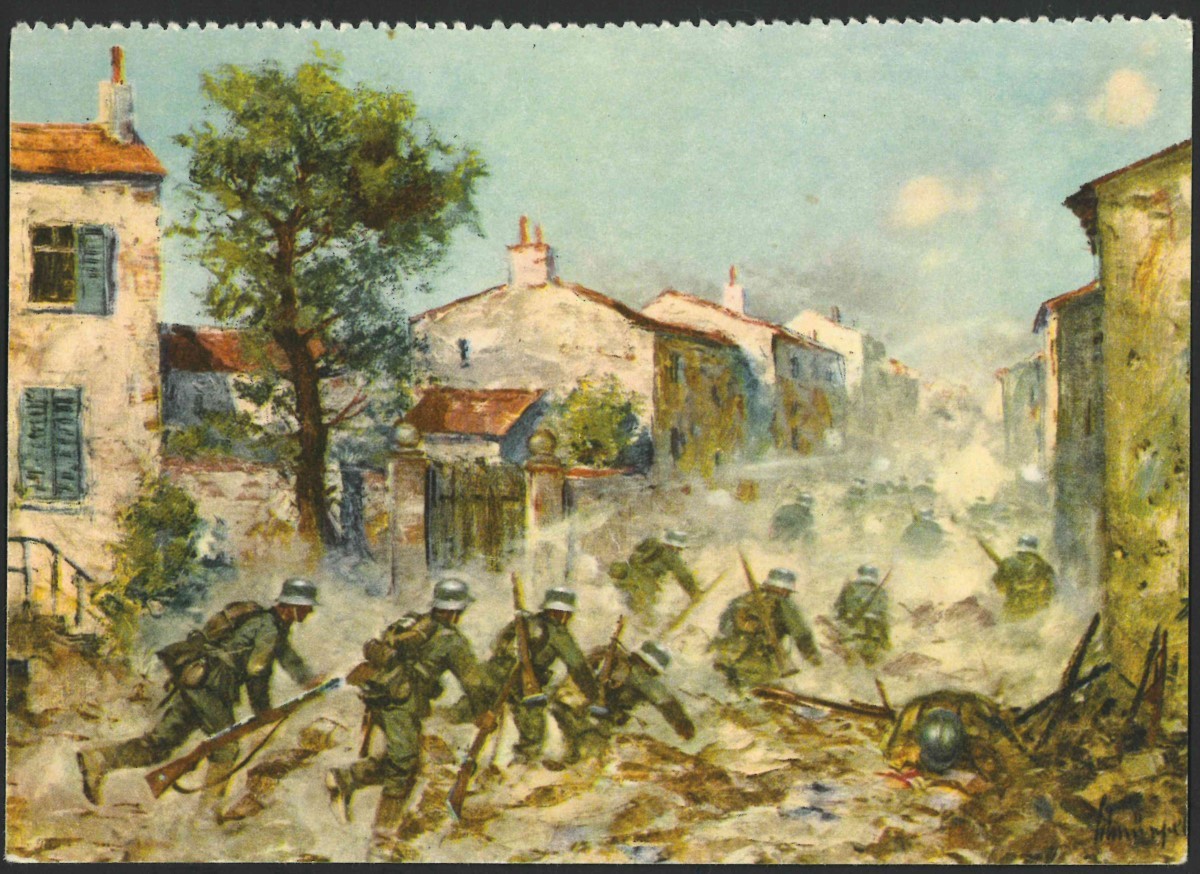



No. 36
This postcard is titled 'Artillerie nach vorn (Belgien)' - 'Artillery forward (Belgium)'. Painting by Schnürpel. This painting shows the important role played by horses in the Second World War. Most people are familiar with Blitzkrieg attacks featuring fast moving columns of armour, but horses played a vital part in moving supplies and artillery pieces throughout the war. An additional bonus was you could always eat the horse if you were hungry, you couldn't do that with a tank.
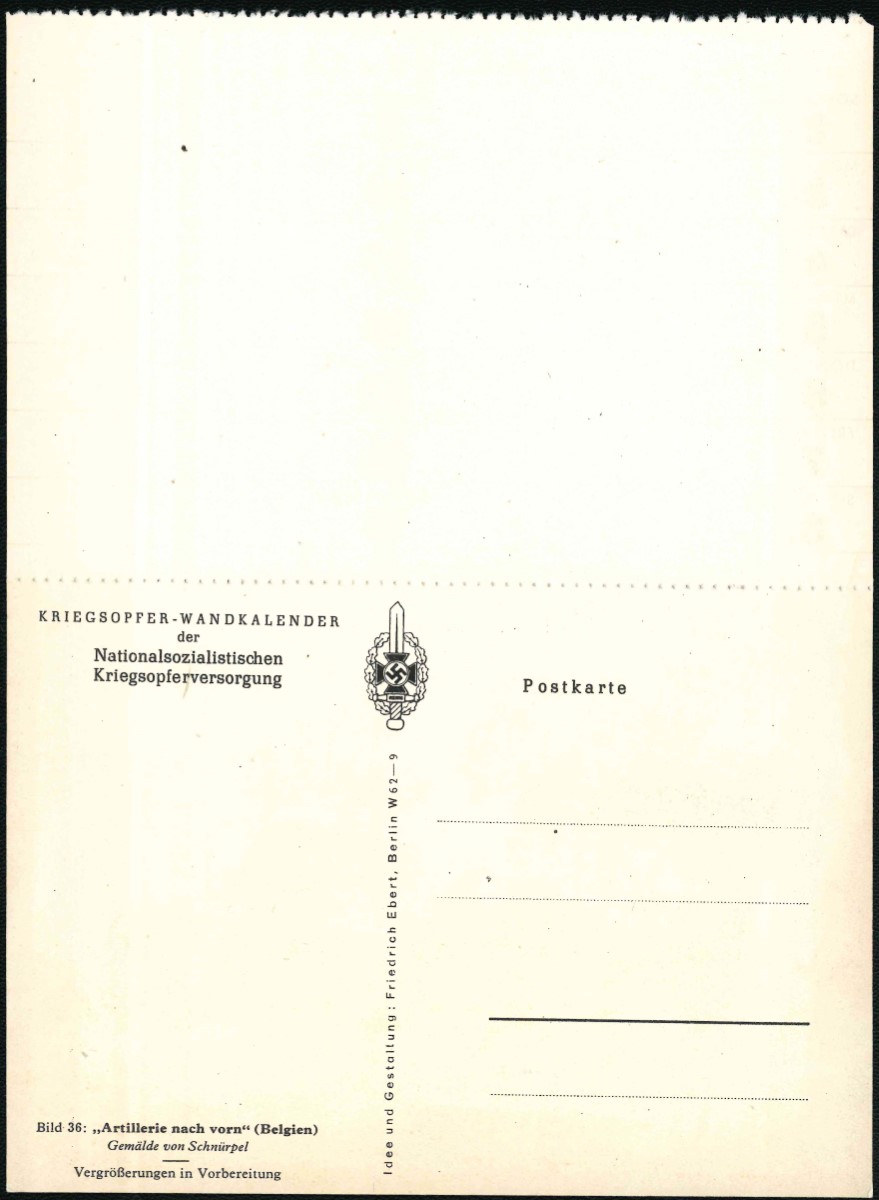





No. 37
This postcard is titled 'Schwere Artillerie beschieβt Petersburg' - 'Heavy artillery bombarded Petersburg'. Painting by Schnürpel.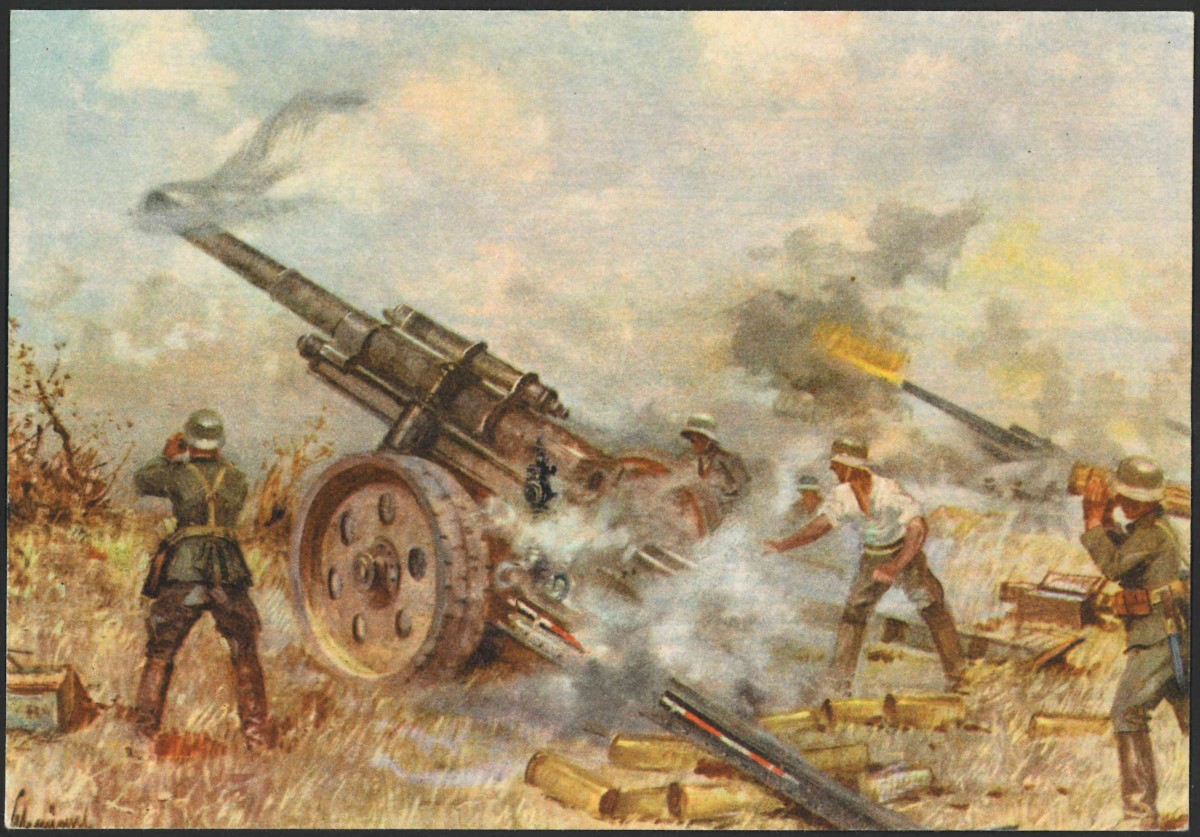






No. 38
This card is titled 'Sturmgeschütze im Angriff in Ruβland' - 'Assault guns on the attack in Russia'. Painting by Schnürpel.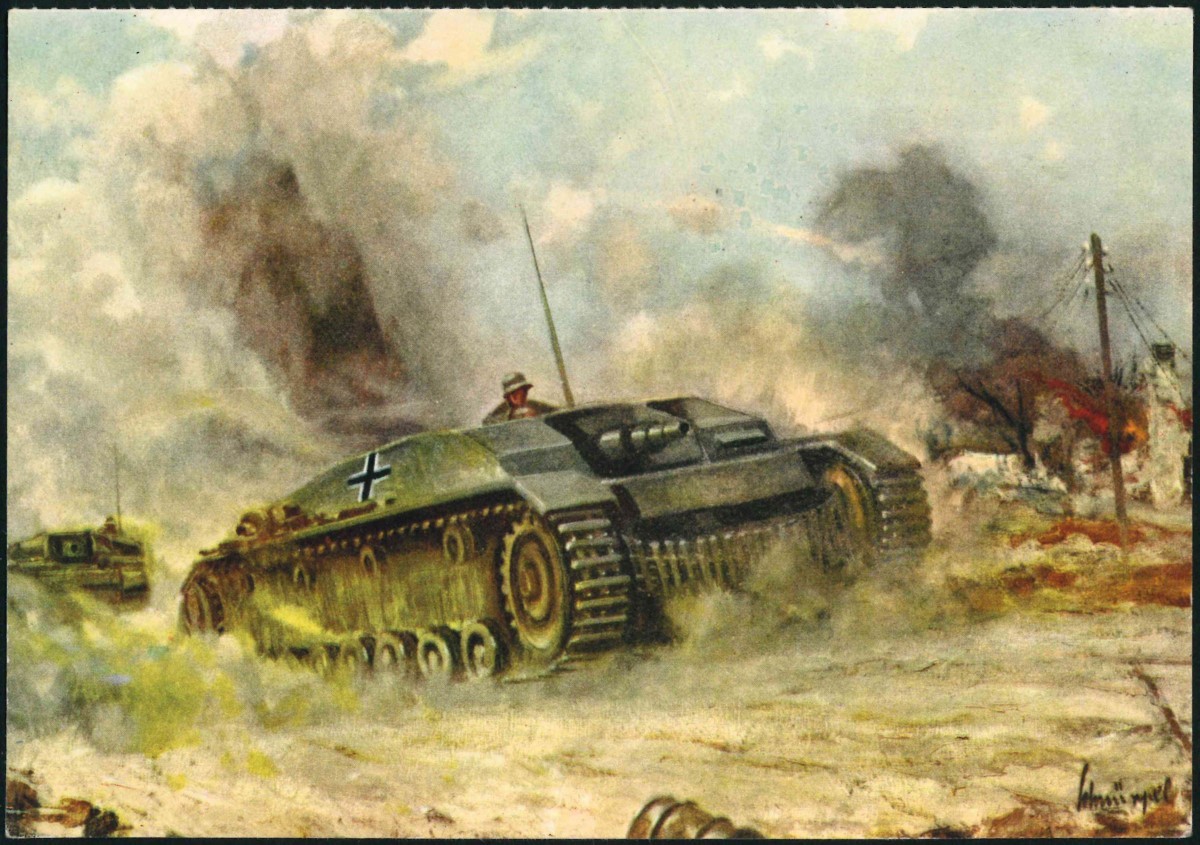
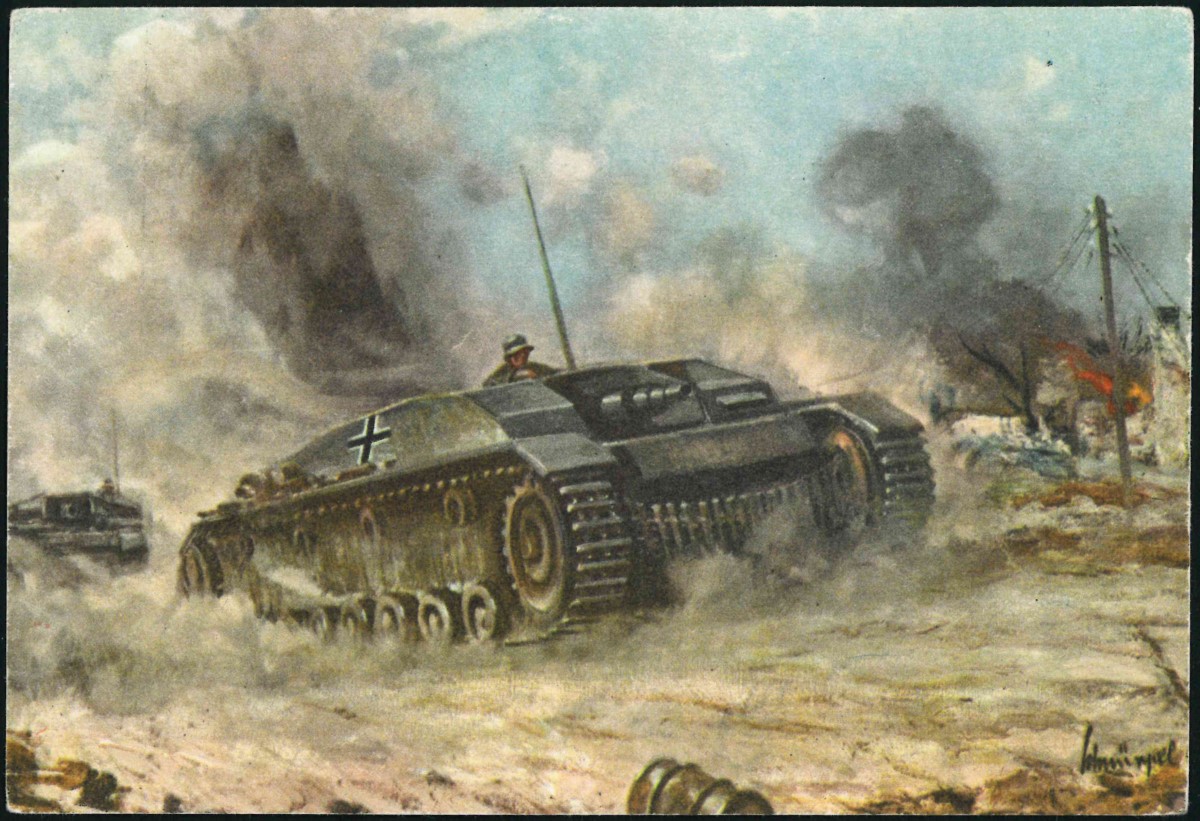




From the example above it would appear that some if not all of these cards exist in two versions. The card on the left has the publisher's details running vertically along the central divding line whereas the card on the right does not. In addition the card on the left has slightly different texts on the upper and lower left-hand edges on the reverse side of the card.

No. 39
The card below bears the inscription "Gebirgsjäger im Vorhegen (Norwegen) | Gemälde von Schnürpel | Vergröβerungen in Vorbereitung" - 'Mountain troops in Vorhegen (Norway) | Painting by Schnürpel | Enlargements in preparation'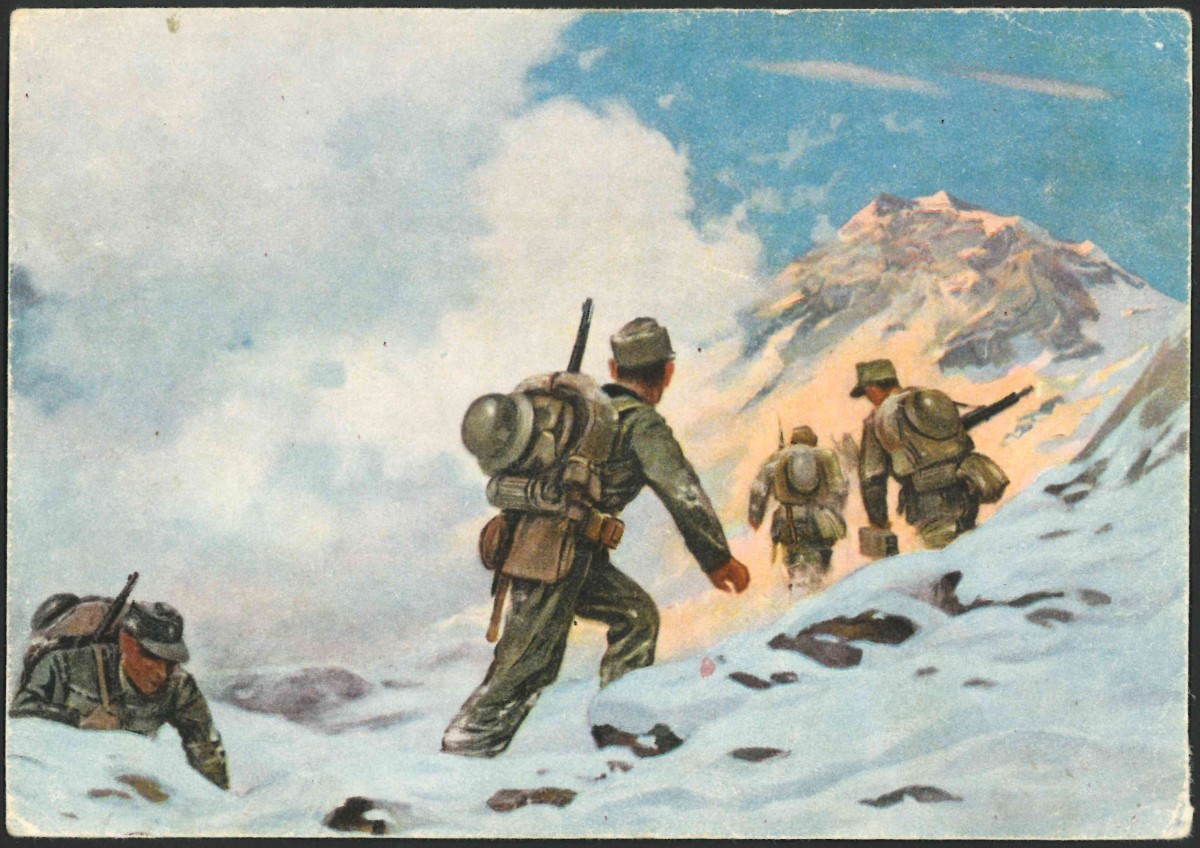
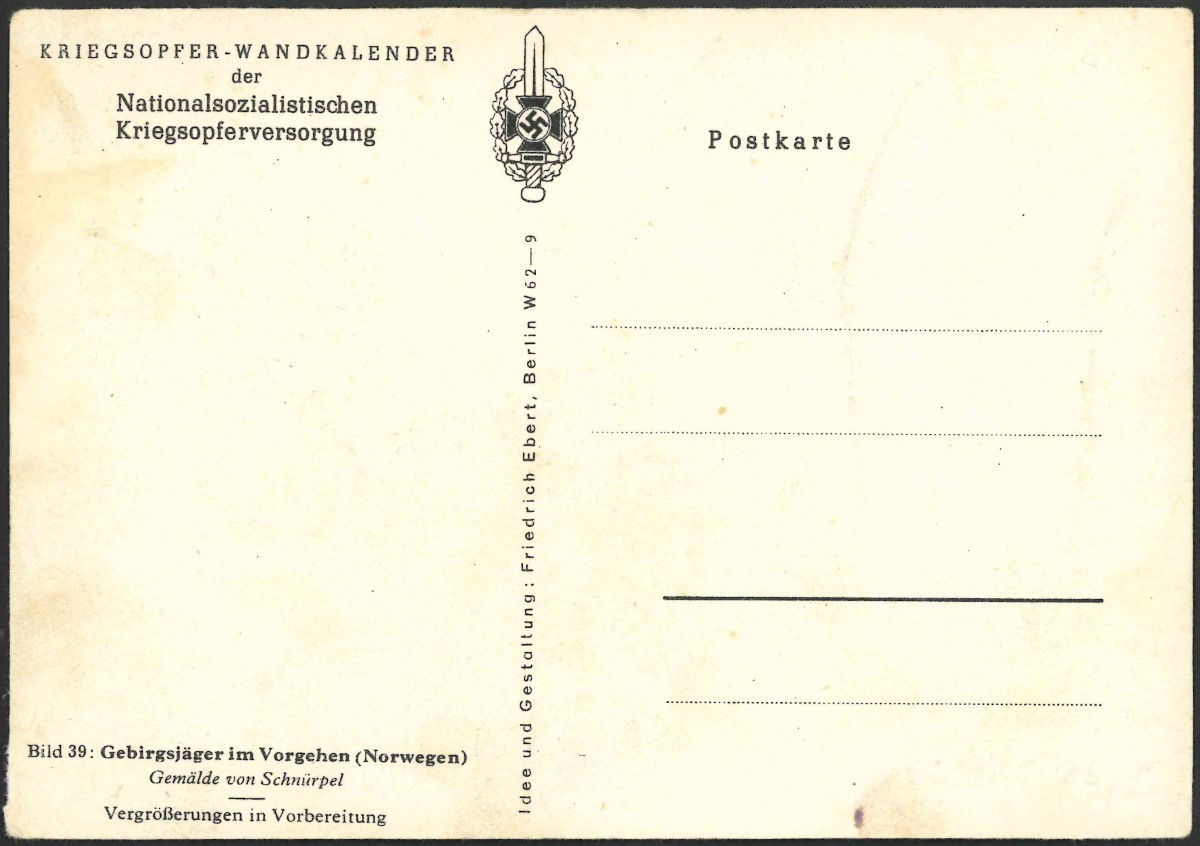


No. 40
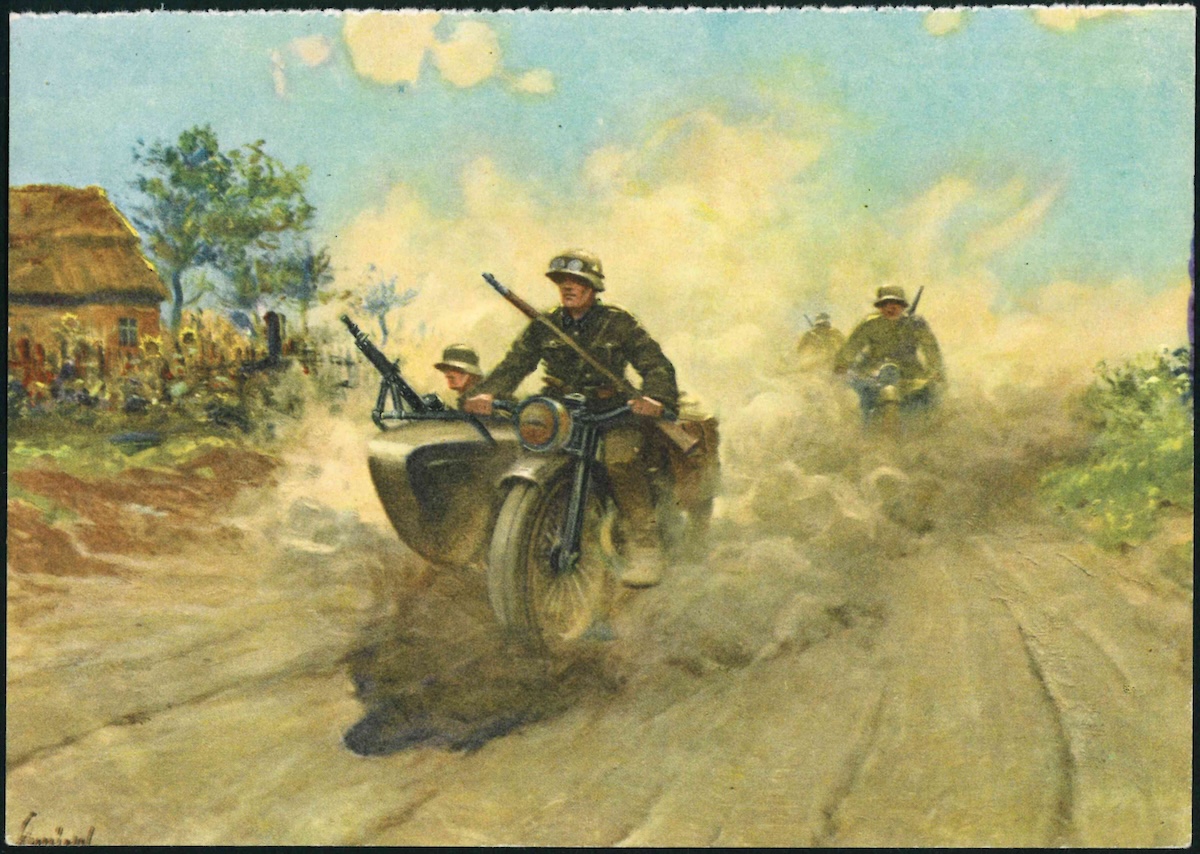
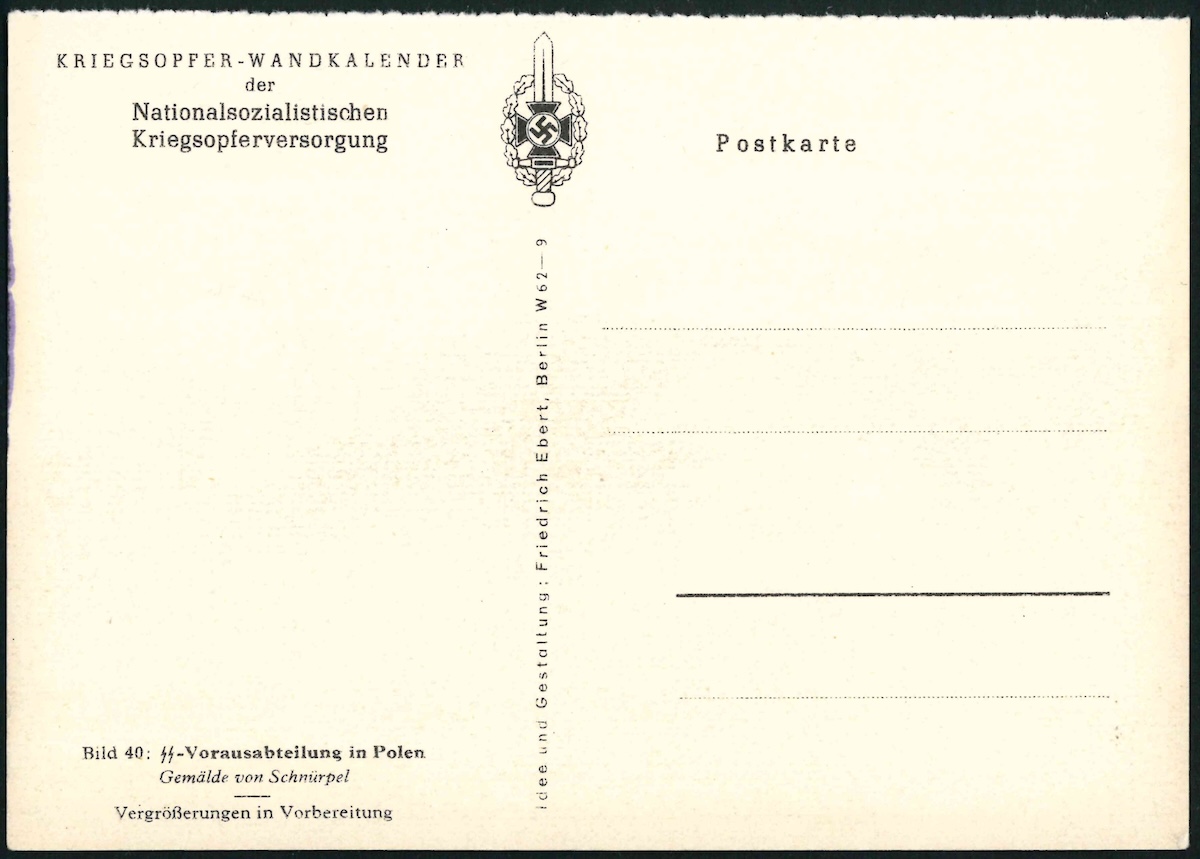


No. 41
This postcard is titled 'Schwere Flak im Kampf gegen russische Panzer' - 'Heavy anti-aircraft guns fighting Russian tanks'. Painting by Schnürpel. The image features an 88mm anti-aircraft gun being used in it's secondary role as a tank destroyer. The 88mm was an extremely effective weapon in both roles.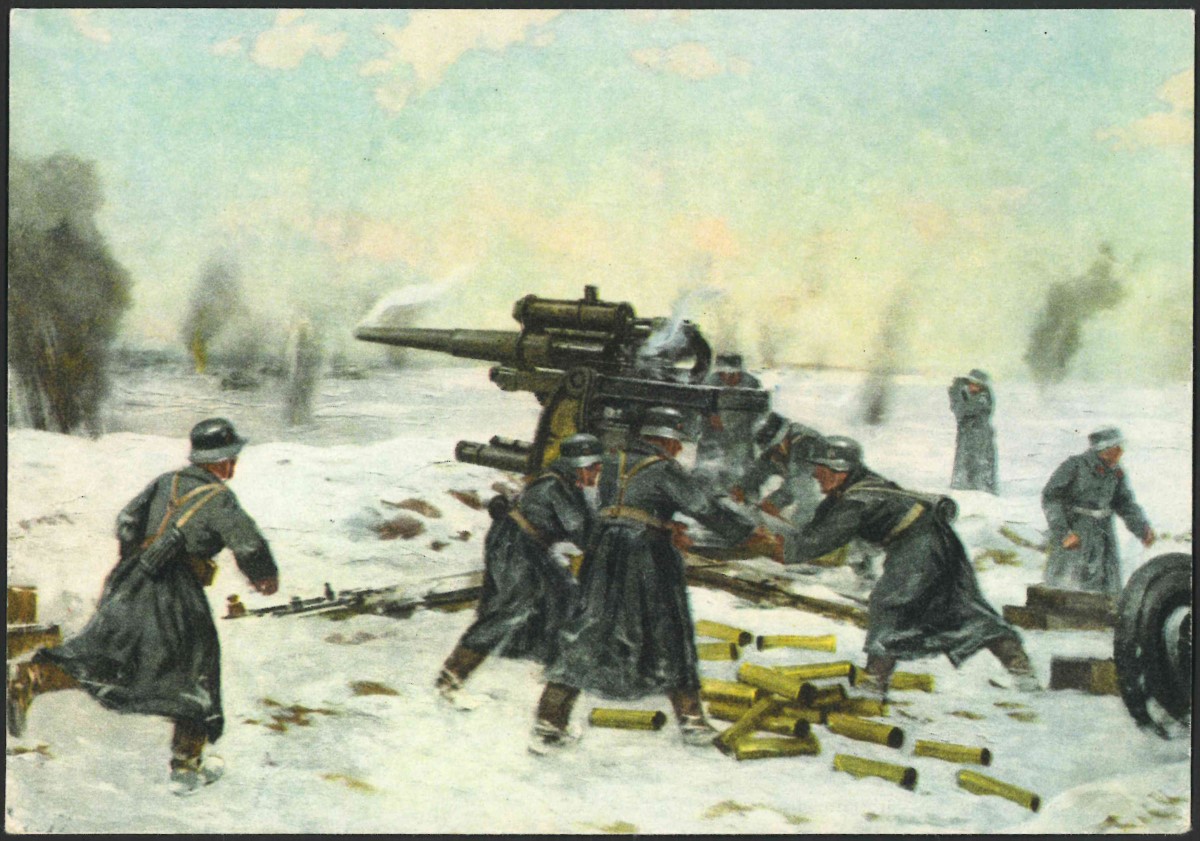
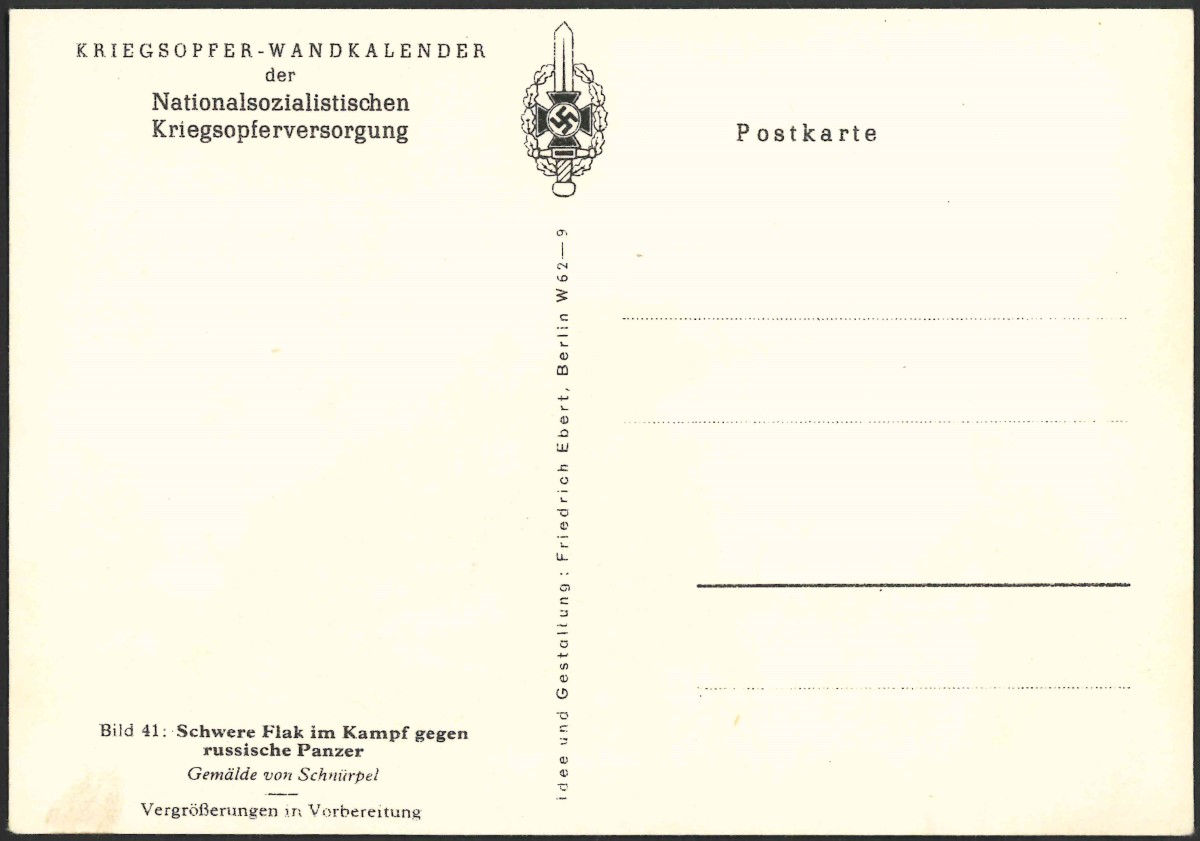


No. 42
Titled ""Bismarck" im kampf vor Island gegen feindliche Übermacht" - '"Bismarck" in the fight off Iceland against superior enemy forces'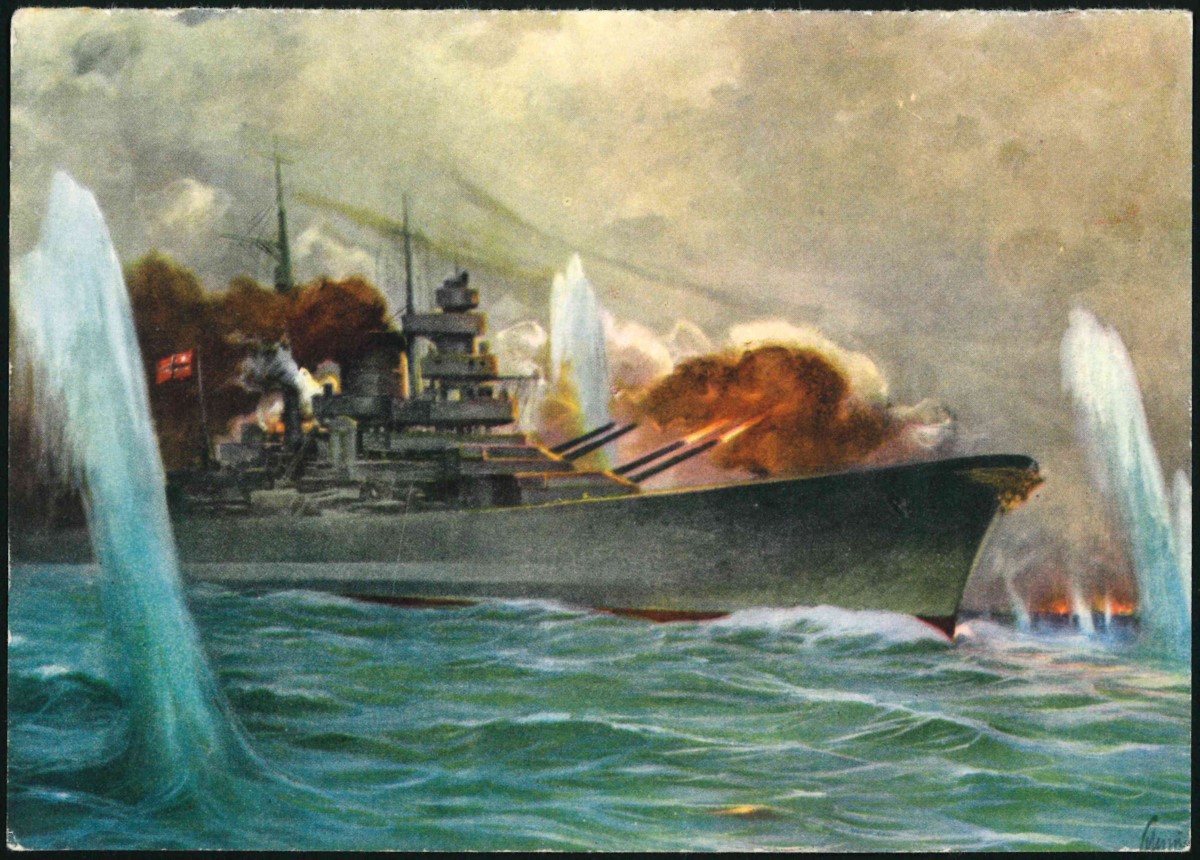
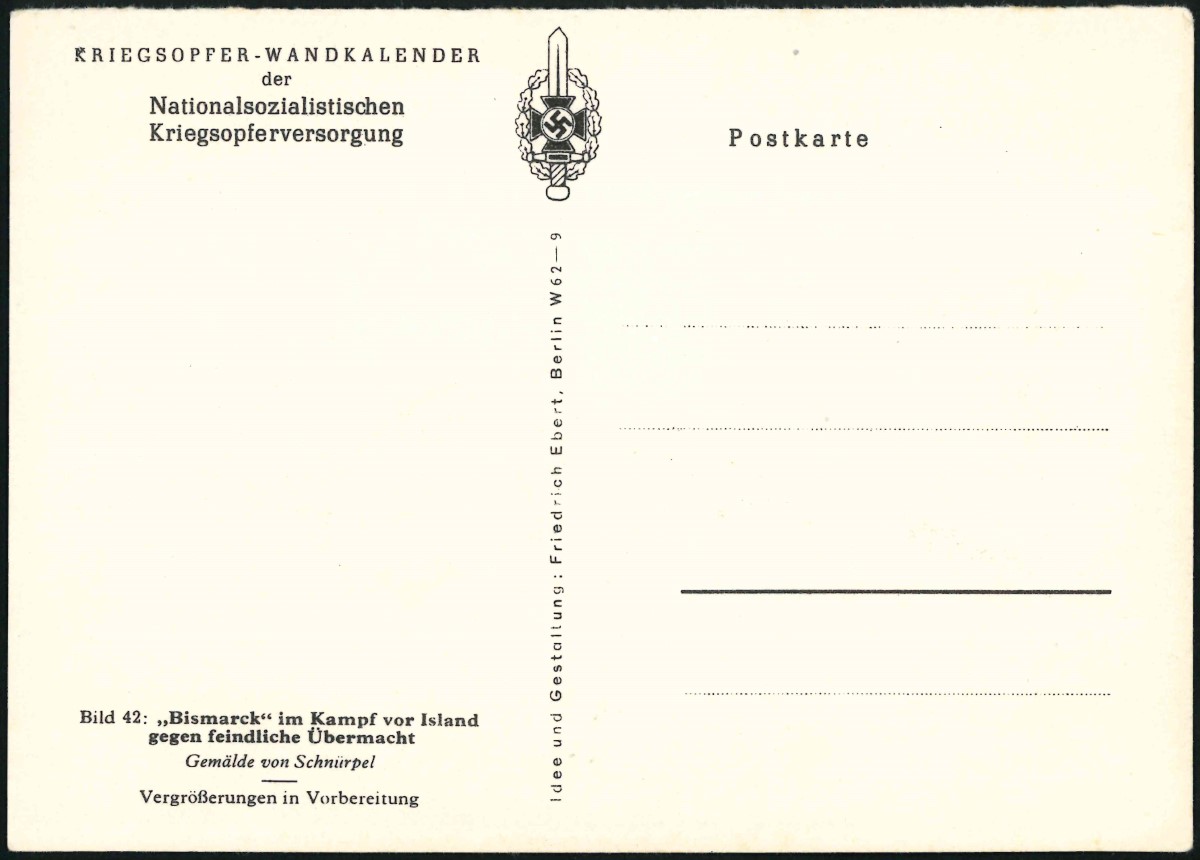


No. 43
The following postcard is entitled "Spähtrupp im Schneegelände | Gemälde von Widmann | Vergröβerungen in Vorbereitung" - 'Scouting troop in snowy terrain | Painting by Widmann | Enlargements in preparation'



No. 44


No. 45
This card has the title "Flammenwerfer gegen russische Feldstellungen" - 'Flamethrowers against Russian field positions'
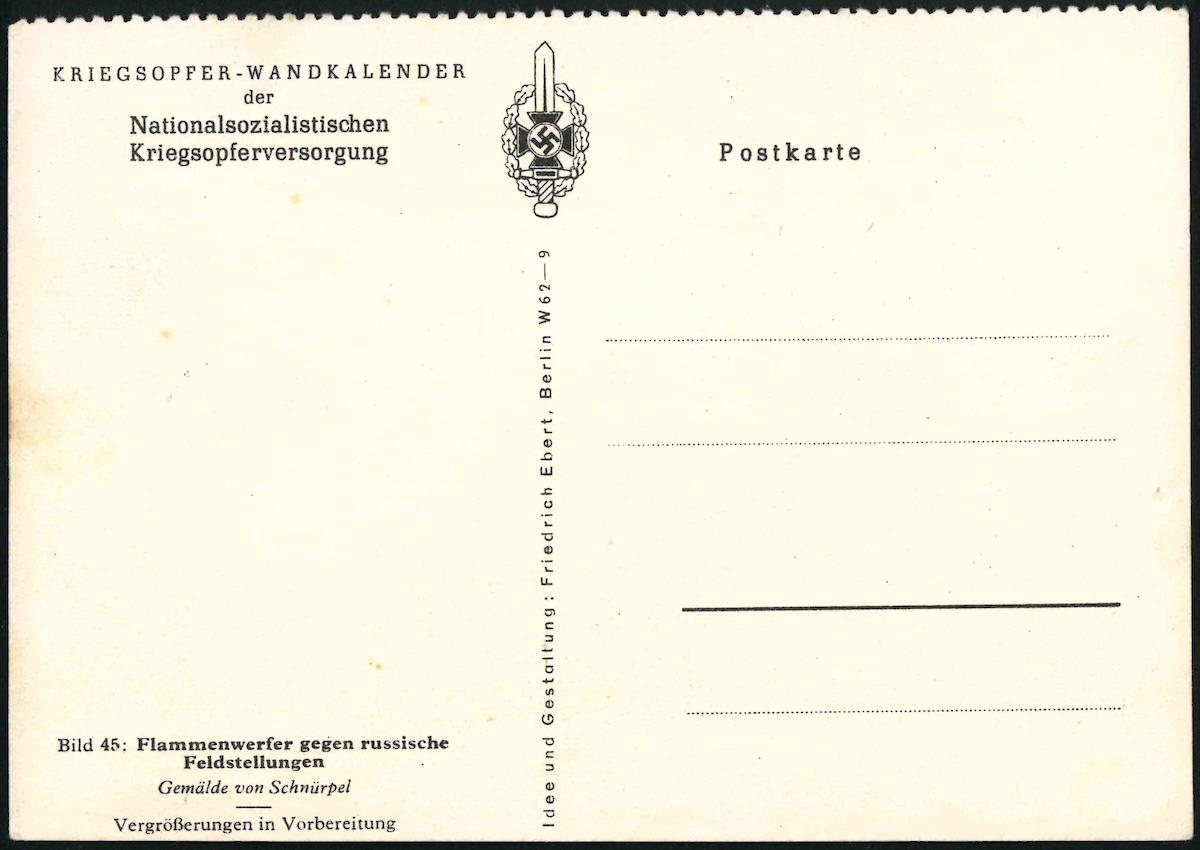


No. 46
Titled "Deutsche Kavallerie-Patrouille in Ruβland | Gemälde von Schnürpel" - 'German cavalry patrol in Russia | Painting by Schnürpel'.